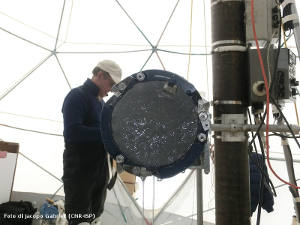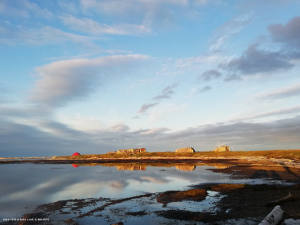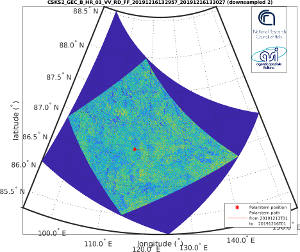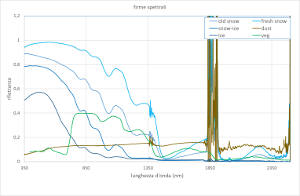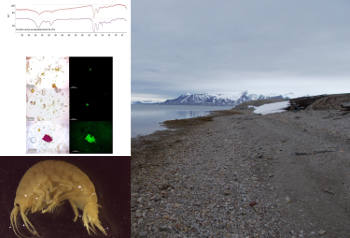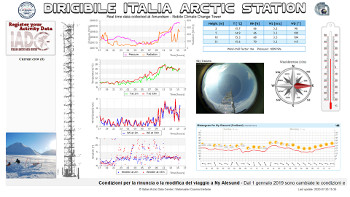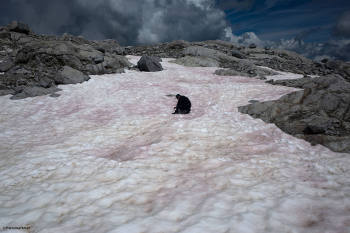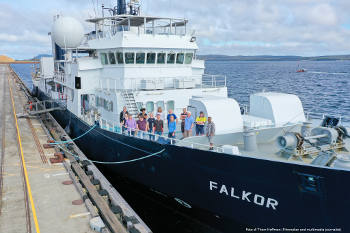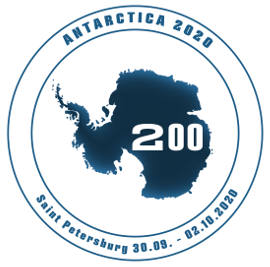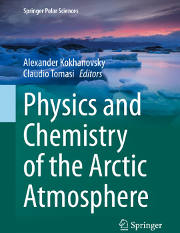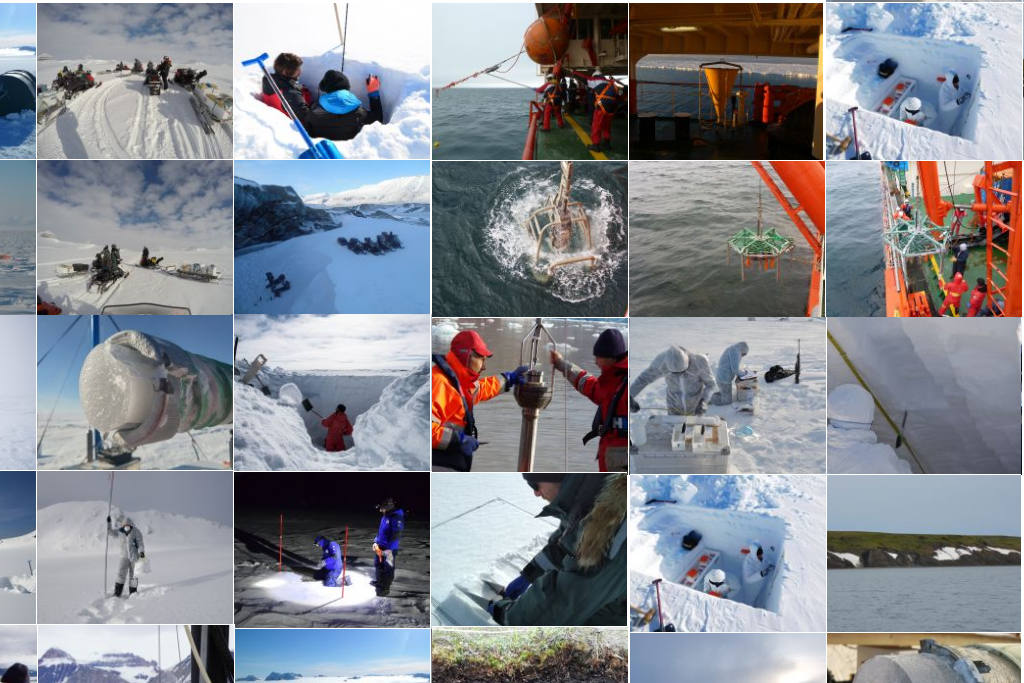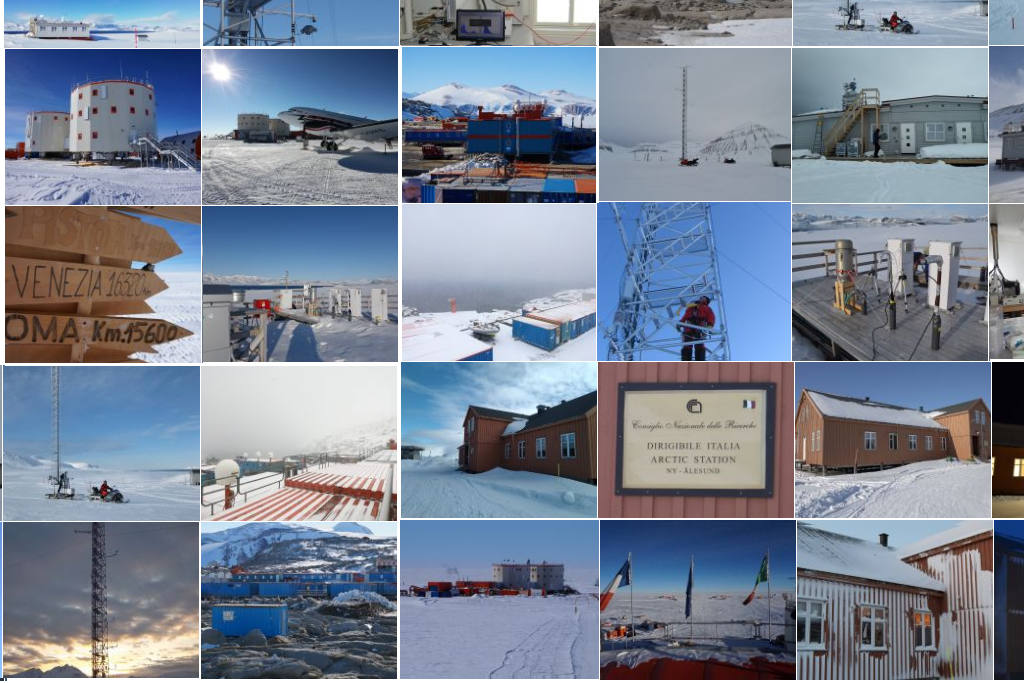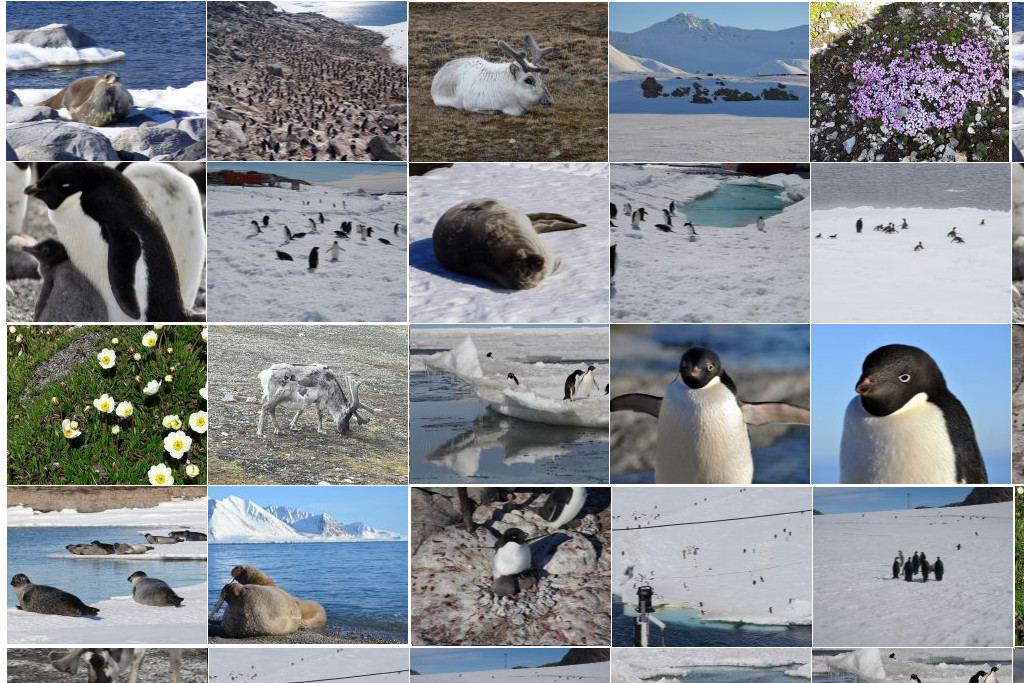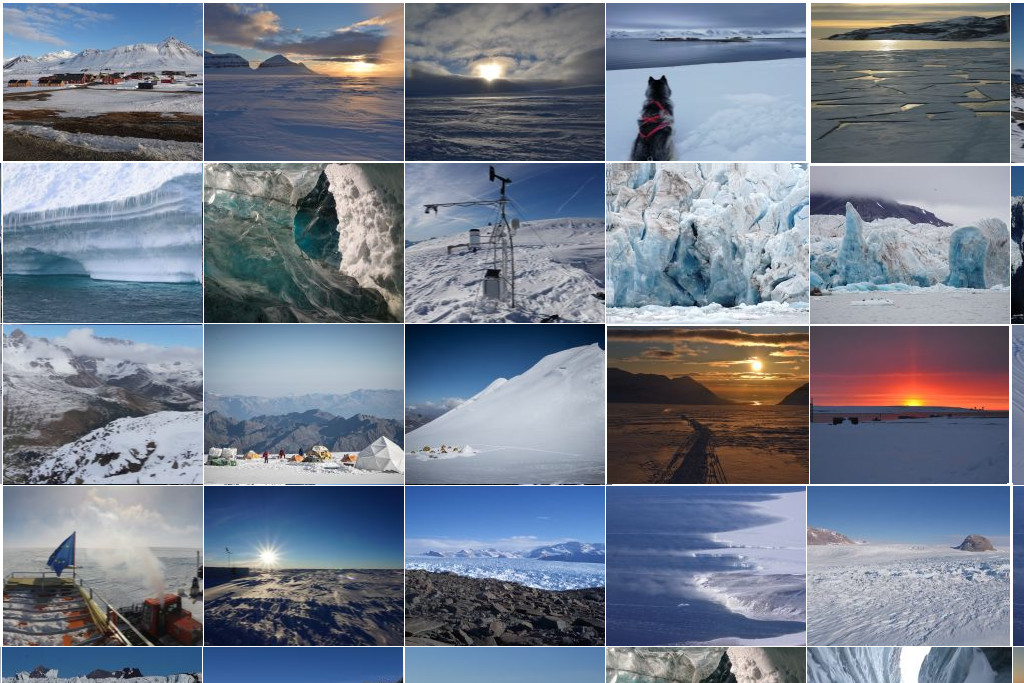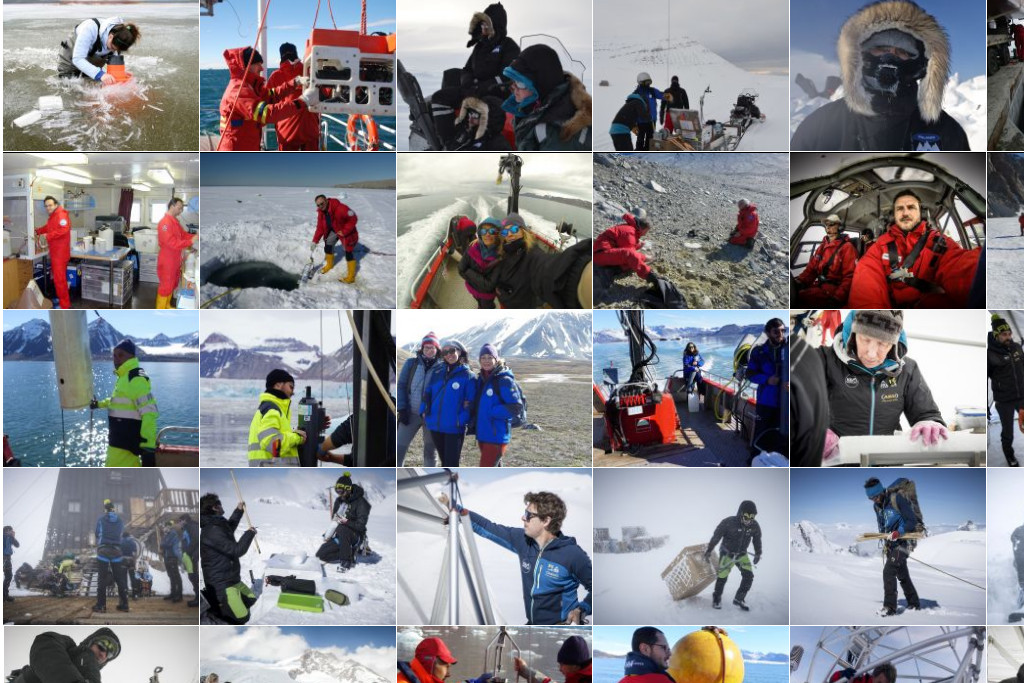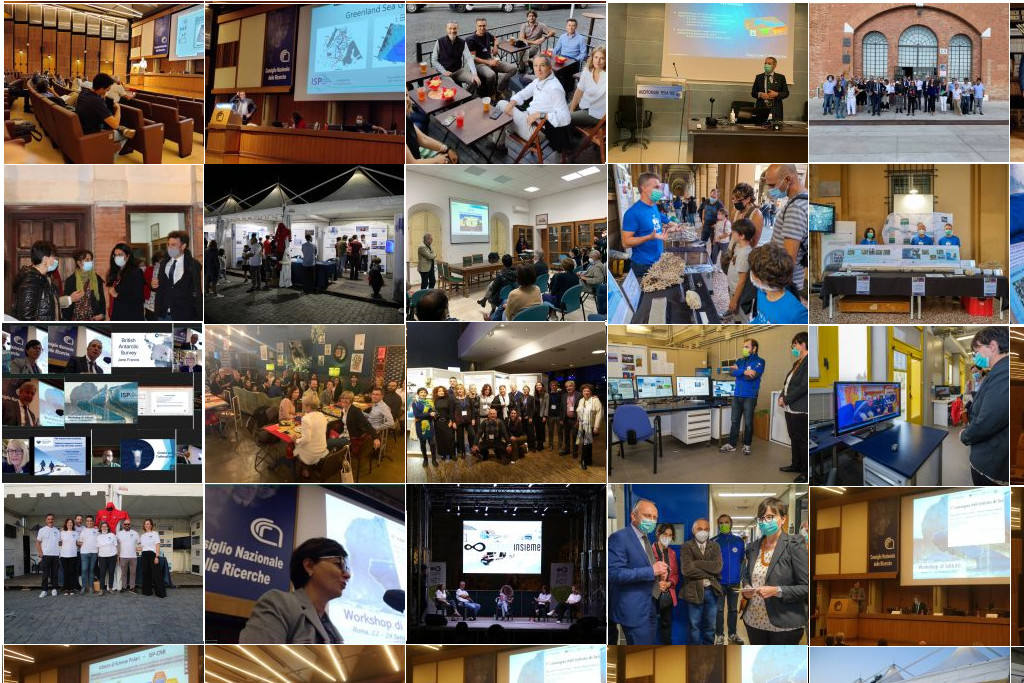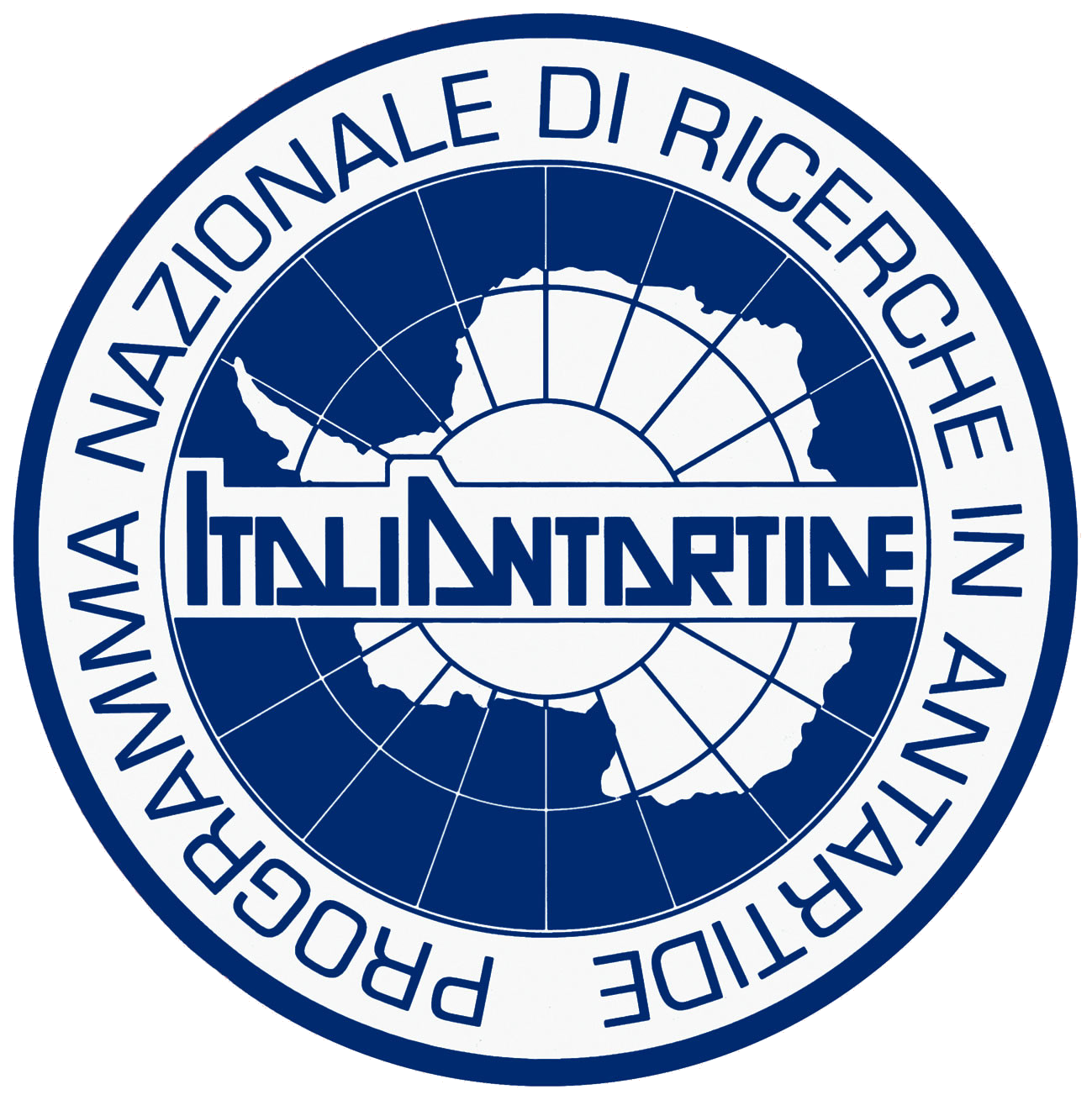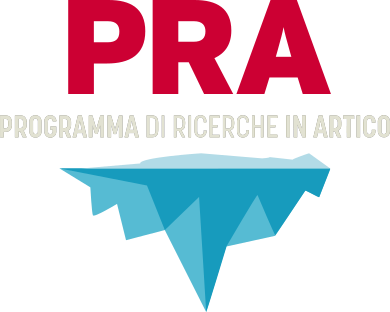Organic Geochemistry Laboratory
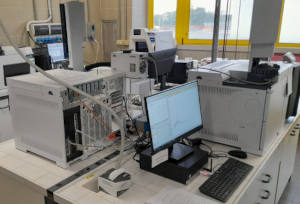 In the Organic Geochemistry Laboratory at the Institute of Polar Sciences in Bologna, researchers and students deal with modern processes and paleo reconstructions by coupling the information provided by fossil biomarkers and stable carbon and nitrogen isotopes. Biomarkers and stable isotopes are geochemical proxies used to investigate the feedback mechanisms between the Earth climate and the biogeochemical cycles. The laboratory is equipped with various instruments to extract, purify and analyze a suite of different biomarkers, including terrestrial compounds (e.g. lignin phenols, aliphatic chain lipids, cutin-derived products) to understand land-ocean carbon exchange (e.g. permafrost thawing, river floods, etc.), alkenones for paleo-temperature reconstructions and highly branched isoprenoids for sea ice reconstructions. In addition, the laboratory is equipped with a Preparative Fraction Collector (Agilent-Gerstel) for the collection of individual compounds. This technique is especially useful for the radiocarbon analysis of biomarkers and can be very useful to derive an age model for the sedimentary archives and to investigate the processes related to permafrost thawing.
In the Organic Geochemistry Laboratory at the Institute of Polar Sciences in Bologna, researchers and students deal with modern processes and paleo reconstructions by coupling the information provided by fossil biomarkers and stable carbon and nitrogen isotopes. Biomarkers and stable isotopes are geochemical proxies used to investigate the feedback mechanisms between the Earth climate and the biogeochemical cycles. The laboratory is equipped with various instruments to extract, purify and analyze a suite of different biomarkers, including terrestrial compounds (e.g. lignin phenols, aliphatic chain lipids, cutin-derived products) to understand land-ocean carbon exchange (e.g. permafrost thawing, river floods, etc.), alkenones for paleo-temperature reconstructions and highly branched isoprenoids for sea ice reconstructions. In addition, the laboratory is equipped with a Preparative Fraction Collector (Agilent-Gerstel) for the collection of individual compounds. This technique is especially useful for the radiocarbon analysis of biomarkers and can be very useful to derive an age model for the sedimentary archives and to investigate the processes related to permafrost thawing.
Facilities
The Organic Geochemistry Laboratory is equipped with several gas chromatographers and mass spectrometers for the analysis of carbon and nitrogen stable isotopes, measurement of carbon, hydrogen, nitrogen and sulphur content in organic matter and the extraction/quantification of organic biomarkers. The analytical facilities include:
- Thermo Fisher Scientific FLASH 2000 Element Analyzer coupled with a mass spectrometer DeltaQ (EA-IRMS)
- GC Agilent GC 7820-MSD EI 5977B
- GC Agilent 8860-FID G2790A
- GC Agilent 8890 equipped by a Gerstel Preparative Fraction Collector (PFC)
For more information: Dr Tommaso Tesi - tommaso.tesi AT cnr.it
Collaborations
National collaborations
The Institute of Polar Sciences collaborates with several National Research Institutes and Universities and provides technical and scientific support and know-how in cooperation projects with public bodies and private companies.
Many research topics are developed in collaboration with other Institutes of the Department of Earth System Sciences and Environmental Technologies (DSSTTA) of the National Research Council of Italy, including for instance the Institute of Marine Sciences (ISMAR), the Institute for the Study of Anthropogenic Impact and Sustainability in the Marine Environment (IAS), the Institute for Marine Biological Resources and Biotechnology (IRBIM), the Institute of Atmospheric Sciences and Climate (ISAC) and the Institute of Atmospheric Pollution Research (IIA). This allows to extend and integrate the ISP skills in a complementary and multidisciplinary way.
Research topics related to the geology and hydrology of the polar regions are developed in collaboration with the Institute of Geosciences and Earth Resources (IGG) and the Institute of Environmental Geology and Geoengineering (IGAG), which are also involved in Arctic and Antarctic polar research.
Research activities on terrestrial ecosystems are conducted in collaboration with the Research Institute on Terrestrial Ecosystems (IRET).
ISP actively collaborates also with other National Research Institutes, including ENEA, INGV, OGS, INRiM, INAF, and Universities, such as the Chemistry Departments of the Universities of Florence, Pisa, Perugia, Turin and Genoa and the Department of Environmental Sciences, Informatics and Statistics of Ca’ Foscari University of Venice. Other collaborations in different areas of research are underway with the University of Insubria, La Sapienza, Messina, Florence, Naples, the Milan Polytechnic and the University of Milano-Bicocca.
Working Group on Outreach and Communication
The Outreach and Communication Working Group is made up of 10 members, appointed by the Director, and with the following tasks:
- Development and updating of the institutional website.
- Check for updates of websites associated with national polar activities.
- Updating the public of our activities through social media.
- Organization of seminars.
- Internal communication within the Institute.
- Collection and cataloguing of ISP Communications and Dissemination activities.
- Collaboration with the CNR Outreach site working group.
- Collaboration with the Press Office of the CNR.
- Collaboration with the Communication Office of the CNR.
Contact: isp-gdl-comunicazione AT isp.cnr.it
The Communication WG of the Institute of Polar Sciences consists of:
Angelo Pietro Viola
(Coordinator from 2019 to March 2023 )
.
.
.
.

Daniela Beatrici
(Webmaster)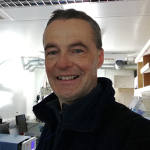
Warren Raymond Lee Cairns

Francesco De Biasio
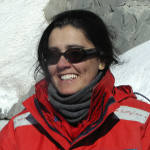
Angelina Lo Giudice
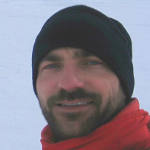
Mauro Mazzola
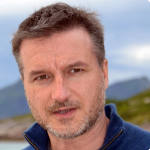
Paolo Montagna
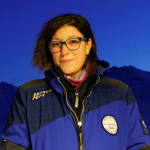
Maria Papale
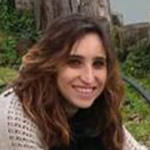
Jasmin Rauseo
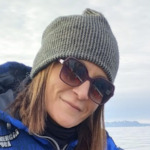
Francesca Spataro

Clara Turetta
(Coordinator)
Giulio Verazzo
------------------------------------------------------------------------------------
Gruvebadet - Aerosol laboratory
The Gruvebadet atmospheric laboratory is located about one kilometre south of Ny-Ålesund and is dedicated to the study of the atmospheric composition and more particularly that of the aerosol. The laboratory was opened in 2010 by the CNR in the building that once housed the Ny-Ålesund miners' showers (Gruve = mine, badet = bathroom in Norwegian).
The laboratory is equipped to house a large number of instruments dedicated to the study of aerosol. There is an accessible roof for the installation of both sampling heads and actual samplers, as well as a series of "passages" for the sampling tubes between the interior of the laboratory and the roof.
The laboratory is managed by the CNR in collaboration with numerous Italian universities: Florence, Perugia, Venice, Turin etc.
The main measurements made in the laboratory are:
- the chemical characterization (organic component and metals) of size segregated atmospheric particulate ;
- measurement of the size distribution of aerosols and their diffusion and radiation absorption properties ;
- the measurement of the carbon component of particulate matter (EC / OC);
- study of new particle formation processes and their ability to form clouds.
In recent years, atmospheric activities have been accompanied by studies of the surface snowpack. The interaction between the atmosphere and snow is one of the topics that most needs to be explored as, for example, the deposition of particulate matter on the snow can accelerate its melting.
The laboratory has attracted more and more interest from foreign researchers; to date, there are numerous active international collaborations on these topics with KOPRI, NPI, the University of Helsinki etc and others.
Gruvebadet - Aerosol laboratory on the website: artico.cnr.it
Concordia
Concordia Station (75°06’ S, 123°21’ E) is located on the Antarctic plateau at Dome C, which is 3,233 m above sea level and over 1000 km from the coast.
Construction of the station, supported by an intergovernmental agreement between Italy and France and the result of the collaboration between the PNRA and the French Polar Institute Paul Émile Victor (IPEV), was completed in 2005. Since then, Concordia is a permanent station jointly managed by PNRA and IPEV as part of their respective polar programs. For more information, visit the website www.pnra.aq.
Dirigibile Italia
Dirigibile Italia is one of the multidisciplinary research stations managed by the CNR, providing support to numerous national and international research projects. The station, inaugurated in 1997, is located in the village of Ny-Ålesund (78°55' N, 11°56' E), on Spitsbergen Island, in the Svalbard archipelago. It is from there that the polar expedition of the General Umberto Nobile set off in 1928, and the station is named in its honour. The Department of Earth System Sciences and Technologies for the Environment (DSSTTA) of the CNR managed the station in the past, but is has now been assigned to the Institute of Polar Sciences (July 2020).
The station participates in the INTERACT and SIOS access programs, making its spaces and means available to countries that do not have access to the Arctic so they can carry out research projects.
It is also included in the Forum of Arctic Operators FARO, a country membership organization that promotes dialogue on logistics and operational support for scientific research in the Arctic.
Dirigibile Italia is a 323 m2 structure, 170 of which are used as laboratories and offices; it can accommodate up to 7 people.
The base is open throughout the year to provide support to research activities.
Among the services that the base provides are:
• 6 beds for staff;
• a chemistry laboratory equipped with a laminar flow hood and an extraction hood, a precision balance, ultrapure water dispenser, freezer and more;
• other workspaces;
• an equipped electronics and mechanics laboratory;
• an internal warehouse space for storing material;
• 3 snowmobiles for winter and spring shifts, equipped with trolleys for transporting material, as well as the necessary suits, boots and helmets;
• 3 fat-bikes with trolley for summer shifts;
• 5 VHF radios for communication between people in the field and for their safety.
- Contact: stationleader.arctic AT cnr.it
- Station Welcome page
- Facebook page of the Research Station
International organizations
The CNR is present in various international coordination and scientific planning organizations in the Arctic and Antarctica. These include the International Arctic Science Committee (IASC), the European Polar Board (EPB), the Forum of Arctic Research Operators (FARO), the Ny-Ålesund Scientific Managers Committee (NySMAC) and the Sustaining Arctic Observing Networks (SAON).
Furthermore, thanks to signed treaties or political agreements, the CNR actively supports the presence of our country, with its experts, in scientific organizations, committees and working groups. CNR researchers participate to the Working and Expert Groups of the Arctic Council (AC). With regards to Antarctica, the CNR takes an active part in the various permanent committees of the Scientific Committee on Antarctic Research (SCAR).
ISP is strongly committed to guaranteeing the participation of the CNR in the SIOS (Svalbard Integrated Arctic Earth Observing System) initiative whose purpose is to integrate, optimize and coordinate resources and research in the Svalbard archipelago at an international level.
In this context, the Institute of Polar Sciences (ISP) supports the CNR’s representation on international bodies with the presence of:
| Acronym | Organisation | Name | Role |
|---|---|---|---|
| Arctic Council - Arctic Contaminants Action Programme
POPs and Mercury Working group |
Warren Cairns | Component | |
| Arctic Council - Expert Group on Black Carbon and Methane | Stefania Gilardoni | Component | |
| Arctic Council - Arctic Monitoring & Assessment Programme | Nicoletta Ademollo, Vito Vitale | Components | |
| Arctic Council - Arctic Monitoring & Assessment Programme
Mercury Working group and POPs Working group |
Warren Cairns | Component | |
| Association of Polar Early Career Scientists National Committees |
Andrea Spolaor | Component | |
| Arctic Research Icebreaker Consortium | Leonardo Langone | CNR reprensentative | |
| Marine Invasive Alien Species in Arctic Waters | Maurizio Azzaro | National Delegate | |
| European Polar Board | Vito Vitale | CNR reprensentative | |
| Forum of Arctic Research Operators | Mauro Mazzola | National reprensentative | |
| An International Study of the Marine Biogeochemical Cycles of Trace Elements and Isotopes | Paolo Montagna | National Delegate | |
| International Arctic Science Committee | Carlo Barbante | National Delegate | |
| International Arctic Science Committee
Cryosphere Working Group |
Andrea Spolaor | Component | |
| International Arctic Science Committee
Marine Working Group |
Tommaso Tesi | Component | |
| International Permafrost Association | Renato R. Colucci | National Delegate | |
| Ny-Ålesund Science Managers Committee | Mauro Mazzola, Andrea Spolaor, ad interim | National representatives | |
| Sustaining Arctic Observing Networks | Vito Vitale | Component | |
| Synoptic Arctic Survey Scientific Steering Committee | Maurizio Azzaro | Component | |
| Scientific Committee on Antarctic Research
Input Pathways of Persistent Organic Pollutants to Antarctica |
Nicoletta Ademollo | Component | |
| Svalbard Integrated Arctic Earth Observing System
Board of Director |
Vito Vitale | Component | |
| Svalbard Integrated Arctic Earth Observing System
Research Infrastructure Coordination Committee |
Mauro Mazzola, Stefania Gilardoni | Components | |
| Svalbard Integrated Arctic Earth Observing System
SIOS Data Management System Working Group |
Giulio Verazzo | Component | |
| United Nations, Division for Ocean Affairs and the Law of the Sea,
World Ocean Assessment III |
Maurizio Azzaro | Expert |
Biological analysis laboratory to assess the effects of organic micropollutants on natural ecosystems (BioChem Lab)
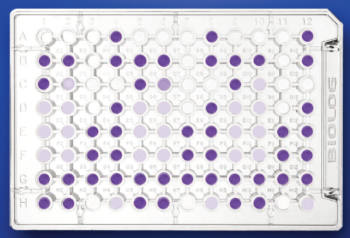
Brief description
The experimental activities carried out at the BioChem Lab in Rome are focused on the study of the effects of legacy and emerging organic micropollutants on organisms belonging to different levels of the trophic web (from microbial communities to higher organisms) in the context of ongoing climate change. The analytical determinations on the biota are aimed at evaluating bioaccumulation and biomagnification processes of target pollutants. Other studies performed at the BioChem Lab focus on:
- The degradation rates (evaluation of the half-life time - DT50 - and determination of metabolites or transformation products of target compounds) of the organic contaminants by setting up laboratory-scale experiments.
- Evaluate the effects of organic micropollutants on specific target organisms (e.g. avoidance behaviour test in Eisenia foetida) and on the structure (PhosphoLipid Fatty Acid analysis-PLFA) and function (Community Level Physiological Profile - CLPP) of autochthonous microbial communities, through the preparation of laboratory-scale experiments and environmental monitoring.
- Investigate the occurrence and diffusion of antibiotic resistance genes (ARGs) and the intI1 gene which is an anthropogenic impact proxy, among natural microbial communities related to the presence of antibiotics in environmental matrices.
Environmental compartments
The bioaccumulation/biomagnification studies of organic micropollutants involve biota such as fish, molluscs, terrestrial and aquatic earthworms and terrestrial and aquatic plant species. The studies on persistence and effects of pollutants on natural microbial communities are related to different environmental compartments such as surface waters and sediments (seas, rivers, lakes), snow/ice and soils.
Analytical techniques
Studies on bioaccumulation/biomagnification/persistence of organic contaminants are performed by a combination of:
- Pre-treatment methods (e.g. freeze-drying, filtration, etc.).
- Extraction/Clean-up methods (solid-phase extraction-SPE, pressurized liquid extraction-PLE, liquid-liquid extraction-LL).
- Sensitive and selective analytical methods based on the coupling of chromatographic techniques (HPLC or GC) and fluorescence, FID-ECD, and mass spectrometric (MS) detection.
- The avoidance behaviour test is based on the exposure of organisms, specifically earthworms belonging to the Eisenia foetida species, to different sub-lethal concentrations of organic contaminants, to evaluate their escape/avoidance behaviour in the contaminated area.
- The evaluation of the composition of natural microbial communities is carried out by PLFA (PhosphoLipid Fatty Acid) profiling. This biochemical technique includes the extraction of fatty acids from microbial membrane phospholipids in the environmental matrix and a methylation reaction followed by separation and analysis with gas chromatography.
- The analysis of microbial diversity at a functional level is performed by the determination of the metabolic/physiological profile (CLPP). This physiological assay involves the incubation of the environmental sample in specific plates and spectrophotometric measurements at fixed times.
- The analysis of ARGs and intI1 gene is performed by DNA extraction from the environmental samples by using specific kits and subsequent analysis by qPCR.
Equipment
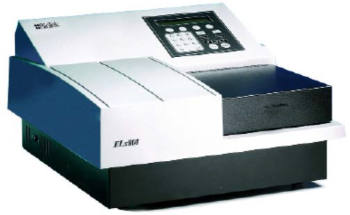 The BioChem Lab is equipped with the following analytical tools:
The BioChem Lab is equipped with the following analytical tools:
Benchtop lyophilizer (freeze-dryer LABCONCO) 2.5 L capacity, equipped with a touchscreen display, for the pre-treatment of solid matrices subsequently extracted with PLE.
Solid Phase Extraction (SPE):12 inlets of the solid phase extractor are connected to cartridges packed with specific adsorbents for the extraction of target compounds from liquid matrices through a vacuum system.
Syncore® Analyst (Buchi) for the simultaneous pre-concentration of liquid phase samples.
Rotavapor R 100 (Buchi), equipped with an electronic interface to control the vacuum system and the recirculating chiller.
Gas Chromatograph (Perkin Elmer, Clarus 480) coupled to a FID-ECD detector (Flame Ionization Detector- Electron Capture Detector). The instrument is connected to an autosampler (Autosystem, Perkin Elmer) and is controlled by TotalChrom Software.
Gas chromatograph (Thermo Fisher, Trace 3000) coupled to a mass spectrometry (MS) detector (Thermo Fisher, ISQ7000). The device is connected to an autosampler (Thermo Fisher. AI 1310) and is controlled by a Chromeleon software.
HPLC (quaternary pump, column Oven mod. LC-100 and Micro Pump Series 200, Perkin Elmer, USA) coupled to a fluorescence detector (Perkin Elmer Series 200a). The device is controlled by Chromeleon Software.
HPLC (binary pump, Vanquish TM Core HPLC system, Thermo Scientific TM, Italy) coupled to a high-resolution mass spectrometer (Orbitrap Exploris 120, Thermo Scientific TM, Italy). The device is controlled by XcaliburSoftware (version 5.1).
Spectrophotometer (Biolog Microstation System, Biolog Inc.) for the reading of microplates (96 positions). This instrument is controlled by specific software.
Contact person: Dr. Luisa Patrolecco – luisa.patrolecco AT cnr.it
Laboratory for the analytical determination of legacy and emerging organic micropollutants (MicroChem Lab)
Brief description
The experimental activities carried out at the MicroChem Lab in Rome focus on the analytical determination of legacy and emerging organic micropollutants and their metabolites, in order to understand their diffusion, distribution, persistence dynamics and fate in the environment. The studies performed at the MicroChem Lab aim also to study the relationships between the climate change and the spread of contaminants at global and local scale. For these purposes, the development and optimization of highly specific and sensitive analytical methodologies for the detection of chemicals at trace and sub-trace concentration levels in the environmental matrices, is required.
Environmental compartments
The experimental activities focus on aquatic and terrestrial ecosystems, therefore the environmental matrices of interest are: Surface waters and sediments (seas, rivers, lakes), snow/ice, soils, aquatic and terrestrial vegetation, biota.
Analytical techniques
The analytical determination of the organic micropollutants is performed by the combination of:
- Pre-treatment methods (e.g. freeze-drying, filtration, etc.);
- Extraction/Clean up methods (solid-phase extraction-SPE, pressurized liquid extraction-PLE, liquid-liquid extraction-LL);
- Sensitive and selective analytical methods based on the coupling of chromatographic techniques (HPLC or GC) with fluorescence, FID-ECD and mass spectrometry detection.
Equipment
The MicroChem Lab is equipped with the following analytical tools:
Benchtop lyophilizer (freeze-dryer LABCONCO) 2.5 L capacity, equipped with a touchscreen display, for the pre-treatment of solid matrices subsequently extracted with PLE.
Solid Phase Extraction (SPE): 12 inlets solid phase extractor connected to cartridges packed with specific adsorbents for the extraction of target compounds from liquid matrices through a vacuum system.
Sonicator (Branson, mod. 2510) for the extraction of chemical compounds from solid matrices by using suitable solvents.
ASE 150 (Dionex, Thermo Scientific) to perform pressurized liquid extraction (PLE) of organic pollutants from solid matrices.
Speed Extractor E-916 (Buchi) to perform simultaneous pressurized liquid extraction (PLE) of 6 samples, operating in different modes.
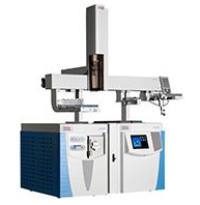 Rotavapor R 100 (Buchi), equipped with an electronic interface to control the vacuum system and the recirculating chiller.
Rotavapor R 100 (Buchi), equipped with an electronic interface to control the vacuum system and the recirculating chiller.
Gas chromatograph (Thermo Fisher, Trace 3000) coupled to mass spectrometry (MS) detector (Thermo Fisher, ISQ7000). The device is connected to an autosampler (Thermo Fisher. AI 1310) and is controlled by a Chromeleon software.
HPLC (quaternary pump, column Oven mod. LC-100 and Micro Pump Series 200, Perkin Elmer, USA) coupled to a fluorescence detector (Perkin Elmer Series 200a). The device is controlled by a Chromeleon Software.
HPLC (binary pump, Vanquish TM Core HPLC system, Thermo Scientific TM, Italy) coupled to a high-resolution mass spectrometer (Orbitrap Exploris 120, Thermo Scientific TM, Italy). The device is controlled by XcaliburSoftware (version 5.1).
Contact person: Dr.Luisa Patrolecco – luisa.patrolecco AT cnr.it
Director
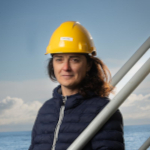 Institute of Polar Science (CNR-ISP)
Institute of Polar Science (CNR-ISP)
GIULIANA PANIERI Director
Giuliana Panieri is the new Director of the Institute of Polar Sciences, and her main interests are the study of extreme marine environments and their connections with climate change in the Arctic and elsewhere. For the last 12 years, she has been a full professor of Geology at the Department of Geosciences of the Arctic University of Norway. She has worked at ISMAR CNR (Italy) and at international universities in the USA, Spain, Germany and France. She has served as President of the Biogeosciences Division and Secretary General of the European Geosciences Union (EGU), managing and coordinating numerous national and international projects. Giuliana has published numerous scientific works, has been a book editor, and has been invited several times as a keynote speaker at international conferences. She has led numerous expeditions in the Arctic Oceans. Lately, she has been keen on developing tools for Ocean Literacy and supporting the UN Sustainable Development Goals, implementing specific tasks and deliverables within the framework of numerous national and international projects.
![]() https://orcid.org/0000-0001-9411-1729 Scopus - Author ID: 56135838100 Loop profile: 835890
https://orcid.org/0000-0001-9411-1729 Scopus - Author ID: 56135838100 Loop profile: 835890
E-mail: direttore.isp AT cnr.it
c/o Campus Scientifico - Università Ca' Foscari Venezia
Via Torino, 155
30172 VENEZIA MESTRE (VE)
Previous directors:
• Mauro Sclavo - Interim Director (From 1st May 2024 until 31st January 2025)
• Carlo Barbante (From 1st May 2020 until 30th April 2024)
• Leonardo Langone - Interim Director (From 1st June 2019 until 30th April 2020)
Internal Advisory Board
The Institute Advisory Board (Art. 13, Regolamento Organizzazione e Funzionamento CNR del 2019) consists of the Director, who presides over it, six elected representatives of the researchers and technologists of the Institute and one technical-administrative staff representative.
Previous Advisory Board
The ISP Advisory Board members are:
.
.
.
.
.
.
.
.

Giuliana Panieri
M.Sclavo (until 2024/31/01)
C.Barbante (until 2024/30/04)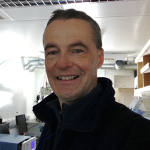
Warren Raymond Lee Cairns
(Representative of the
Researchers and Technologists)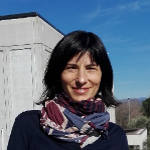
Pamela Cialli
(Representative of the
Technical-Administrative staff) 
Fabiana Corami
(Representative of the
Researchers and Technologists)
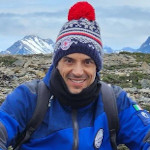
Francesco Filiciotto
(Representative of the
Researchers and Technologists) 
Angelina Lo Giudice
(Representative of the
Researchers and Technologists)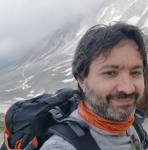
Angelo Lupi
(Representative of the
Researchers and Technologists)
Francesca Spataro
(Representative of the
Researchers and Technologists)
December 21, 2019 - December 19, 2023
Director: Carlo Barbante
Representatives of the researchers and technologists: Maurizio Azzaro, Fabiana Corami, Federico Giglio, Elena Gregoris, Mauro Mazzola, Rosamaria Salvatori
Representative technical-administrative staff: Alessandro Cosenza
Climate Change Tower
The Amundsen-Nobile Climate Change Tower (CCT) is a scientific platform dedicated to studying the thermodynamic characteristics of the atmospheric boundary layer and the exchange processes between the surface and the lower layers of the atmosphere. The structure is composed of 17 modules equipped with patch boxes to provide a power supply and data connection that ends in a dedicated hut at 40 m from the tower, where the acquisition systems are located. The CCT provides continuous profiles of meteorological parameters at four levels up to 34 m, measurements of turbulent fluxes of momentum heat and moisture at two levels as well as of radiation balance components (visible and infrared). Measurement of the characteristics of the snow layer (depth and temperature) are also provided in conjunction with the atmospheric parameters.
Due to the uniqueness of such an infrastructure in Ny-Ålesund, since 2012, the CCT and the surrounding area have become a point of reference for the integrated observation of the components of the climate system. Offering access to national and international research groups, new scientific installations have been set up. In particular for the measurement of greenhouse gases (in collaboration with KOPRI); for the measurement of the snow cover index and spectral reflectivity of the snow; for remote sensing of wind profiles with SODAR and WindLIDAR (in collaboration with KOPRI); to study processes in the active layer, the vegetation, the snow cover and the permafrost temperature profiles.
History
The Institute of Polar Sciences (ISP) of the National Research Council was born on June 1st, 2019 with act n.81 on 31/05/2019 of President Inguscio. The idea of a Polar Institute has its roots in research activities, which have expanded over time, starting from the first years of Antarctic research in 1985. The construction of the Italian base in Antarctica (MZS station) before and the base in the Arctic (DI station) afterwards, has allowed the development of two generations of polar researchers who have made these remote environments their natural laboratory and their home away from home.
The National Research Program in Antarctica (PNRA)
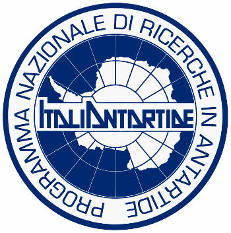 Since its first expeditions in 1968, 1973 and 1978, the CNR has strongly supported the diplomatic action of the MAECI (Ministry of Foreign Affairs and International Cooperation) which led to the accession of Italy to the Antarctic Treaty. The CNR initially contributed to identifying the construction site of the Italian station Mario Zucchelli and is currently coordinating the different lines of scientific activity of the National Research Program in Antarctica (PNRA). The implementation of research in Antarctica is carried out by the national scientific community, of which 51% are university research groups, 23% CNR research groups, 9% from INGV, 5% from ENEA, 4 % from OGS and INAF and the remaining 4 % is carried out by other institutions. The scientific priorities identified within the framework of the National Research Program in Antarctica, are mostly multidisciplinary, and can be traced around the following topics: dynamics of the atmosphere and climate processes, dynamics of the polar ice cap, solid earth dynamics, polar ocean dynamics, Sun-Earth relationships and space-weather, the universe above Antarctica, evolution, adaptation and biodiversity, humankind in extreme environments, environmental contamination, paleoclimate, environmental issues and risks, as well as technology: innovation and experimentation. In many of these research areas, the CNR’s activity, thanks to its research network, is at an excellent level, although it is still fragmented into numerous institutes belonging to various departments.
Since its first expeditions in 1968, 1973 and 1978, the CNR has strongly supported the diplomatic action of the MAECI (Ministry of Foreign Affairs and International Cooperation) which led to the accession of Italy to the Antarctic Treaty. The CNR initially contributed to identifying the construction site of the Italian station Mario Zucchelli and is currently coordinating the different lines of scientific activity of the National Research Program in Antarctica (PNRA). The implementation of research in Antarctica is carried out by the national scientific community, of which 51% are university research groups, 23% CNR research groups, 9% from INGV, 5% from ENEA, 4 % from OGS and INAF and the remaining 4 % is carried out by other institutions. The scientific priorities identified within the framework of the National Research Program in Antarctica, are mostly multidisciplinary, and can be traced around the following topics: dynamics of the atmosphere and climate processes, dynamics of the polar ice cap, solid earth dynamics, polar ocean dynamics, Sun-Earth relationships and space-weather, the universe above Antarctica, evolution, adaptation and biodiversity, humankind in extreme environments, environmental contamination, paleoclimate, environmental issues and risks, as well as technology: innovation and experimentation. In many of these research areas, the CNR’s activity, thanks to its research network, is at an excellent level, although it is still fragmented into numerous institutes belonging to various departments.
Vittuari Luca
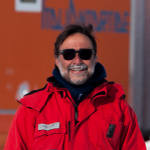 Full Professor within the Class 08/A4 - Geomatics at the University of Bologna Department DICAM. Coordinator of the PhD@DICAM Doctoral course, composed by four curricula (PhD in Civil, Chemical, Environmental and Materials Engineering) of DICAM. Scientific Responsible of the Land Surveying and Geomatics Laboratory (LARIG). Part of the International GNSS Service and member of the University Consortium: UNAVCO.
Full Professor within the Class 08/A4 - Geomatics at the University of Bologna Department DICAM. Coordinator of the PhD@DICAM Doctoral course, composed by four curricula (PhD in Civil, Chemical, Environmental and Materials Engineering) of DICAM. Scientific Responsible of the Land Surveying and Geomatics Laboratory (LARIG). Part of the International GNSS Service and member of the University Consortium: UNAVCO.
Main scientific and research activities in the polar regions:
- Researches in Antarctica for the study of geodynamics and for the study of glaciers movements, within the National Program of Research in Antarctica (PNRA) since 1990.
- To date he attended 10 scientific expeditions in Antarctica and one in Arctic (Svalbard Islands) in 2002.
- Responsible of the GPS geodetic network for the study of the ice surface velocity field around the site of the deep ice coring at Dome Concordia (European Project for Ice Core in Antarctica, EPICA).
- Member of the European Project H2020 Beyond EPICA – Oldest Ice, with the aim to retrieve a continuous ice core to bedrock in Antarctica, covering the climate history of the Mid Pleistocene Transition and beyond.
- Responsible of the GNSS permanent station installed at Station Concordia.
- Contribution for the installation and data analysis of a tide gauge station at Italian Mario Zucchelli Station (Antarctica).
Severi Mirko
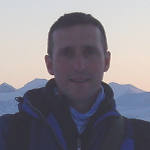 He received his bachelor's degree in Chemistry at the University of Florence in 2000. From 2001 to 2004, in the framework of his PhD at the Department of Chemistry, University of Florence, he worked on the development of semi-continuous ion chromatography coupled to Flow Analysis systems within the European project EPICA (European project for Ice Coring in Antarctica). On 20 April 2004 he got his PhD in Chemical Sciences. He took part in the national research campaigns in Antarctica 2001-2002 and 2003-2004 in the bases of Dome Concordia and Baia Terra Nova running chromatographic analyses in situ on a deep ice core perforated at Dome C as part of the EPICA project.
He received his bachelor's degree in Chemistry at the University of Florence in 2000. From 2001 to 2004, in the framework of his PhD at the Department of Chemistry, University of Florence, he worked on the development of semi-continuous ion chromatography coupled to Flow Analysis systems within the European project EPICA (European project for Ice Coring in Antarctica). On 20 April 2004 he got his PhD in Chemical Sciences. He took part in the national research campaigns in Antarctica 2001-2002 and 2003-2004 in the bases of Dome Concordia and Baia Terra Nova running chromatographic analyses in situ on a deep ice core perforated at Dome C as part of the EPICA project.
Since June 2002, he took part to several EPICA-DML and TALDICE ice core processing campaigns at the Alfred Wegener Institute for Polar and Marine Research in Bremerhaven (D). He participated to numerous sampling campaigns in the Arctic (at the Dirigibile Italia base in Ny Alesund) for the study of climate change through the monitoring of atmospheric aerosol. From December 2004 to 31st January 2018 he was the holder of several fellowships and research grants focused on to the development and application of analytical methods on ice cores and climate archives. From 01/02/2018 to 30/11/2018 he was Fixed term Researcher (RTDa) at the "Ugo Schiff" Department of Chemistry of the University of Florence SSD CHIM / 01. Starting from 01/12/2018 he held the position of Tenure track Researcher (RTDb) at the "Ugo Schiff" Department of Chemistry of the University of Florence SSD CHIM / 01. He is associated Professor at University of Florence since 1st December 2021.
Parmiggiani Flavio
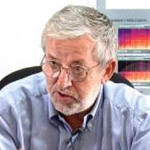 Degree in Physics from the University of Milan. Retired since 2013, he currently works as an associate researcher at CNR-ISAC where, since 2001, he has been Research Director. Recent research activity has been mainly carried out in the participation in two European projects:
Degree in Physics from the University of Milan. Retired since 2013, he currently works as an associate researcher at CNR-ISAC where, since 2001, he has been Research Director. Recent research activity has been mainly carried out in the participation in two European projects:
- ICE-ARC
- SPICES
The research topic for which the association with CNR-ISP was requested is the study of the characteristics and distribution of sea ice in polar areas with SAR images.
Gambaro Andrea
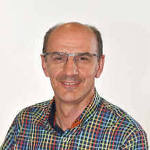 Full Professor at the Ca’ Foscari University of Venice. Since 2003 he has supervised teaching activities in the Degree Courses in Chemistry, in Chemical Sciences for Conservation and Restoration (SCCR), in Materials Science and Technologies and in Environmental Sciences. His research is focused mainly on: 1) studies on the origin, seasonal evolution and environmental fate of organic sulfur compounds of biological origin (dimethyl sulfide, carbon sulfide and dimethyl sulfonyopropionate) produced in the aquatic system; 2) development of analytical methodologies for the determination of organic micro pollutants (PCB, PAH, PCN, PBDE, PCDD, PCDF, IA) in environmental matrices (water, sediment, atmospheric aerosol) by gas chromatography coupled to both low and high resolution mass spectrometry; 3) development of analytical methodologies for the determination of natural organic compounds (amino acids, sugars, methoxyphenols, algal and fungal toxins, etc.. ) and anthropic (fragrances, aromatic pollutants) in water, biota, aerosol, snow and ice by liquid chromatography coupled with mass spectrometry for the study of local, global contamination and climate change. This activity has led to collaborations with various research groups (Griffith University, Australia; University of Charleston, U.S.A.; Boston College, U.S.A.; University of Sarajevo, Bosnia and Herzegovina; University of Belgrade, Serbia; Aristotle University of Thessaloniki, Greece; University of Rijeka, Croatia; University of Tirana, Albania, etc.. ).
Full Professor at the Ca’ Foscari University of Venice. Since 2003 he has supervised teaching activities in the Degree Courses in Chemistry, in Chemical Sciences for Conservation and Restoration (SCCR), in Materials Science and Technologies and in Environmental Sciences. His research is focused mainly on: 1) studies on the origin, seasonal evolution and environmental fate of organic sulfur compounds of biological origin (dimethyl sulfide, carbon sulfide and dimethyl sulfonyopropionate) produced in the aquatic system; 2) development of analytical methodologies for the determination of organic micro pollutants (PCB, PAH, PCN, PBDE, PCDD, PCDF, IA) in environmental matrices (water, sediment, atmospheric aerosol) by gas chromatography coupled to both low and high resolution mass spectrometry; 3) development of analytical methodologies for the determination of natural organic compounds (amino acids, sugars, methoxyphenols, algal and fungal toxins, etc.. ) and anthropic (fragrances, aromatic pollutants) in water, biota, aerosol, snow and ice by liquid chromatography coupled with mass spectrometry for the study of local, global contamination and climate change. This activity has led to collaborations with various research groups (Griffith University, Australia; University of Charleston, U.S.A.; Boston College, U.S.A.; University of Sarajevo, Bosnia and Herzegovina; University of Belgrade, Serbia; Aristotle University of Thessaloniki, Greece; University of Rijeka, Croatia; University of Tirana, Albania, etc.. ).
As part of the National Antarctic Research Programme he was responsible for Research Unit (UO) in 2004-2006; Principal Investigator in 2010-2012; responsible of UO in 2013-2014 and since 2016.
The research activity has led to the publication of over 140 publications of which 126 appear on SCOPUS, 10 chapters of books and about 200 communications at national and international conferences (h-index= 30).
Becagli Silvia
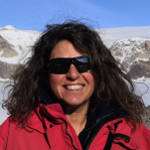 Graduate in Chemistry and Pharmaceutical Technology in 1991 at the University of Florence, in 1998 Philosophy Doctor in Environmental Science with the thesis Study of Antarctic ecosystem by ice core chemical analysis. Since 1999 she has a permanent position at the Department of Chemistry - University of Florence. In 2013 and 2017 she obtained the National Abilitation for Professor in Analytical Chemistry and in 2017 she obtained the National Abilitation for full Professor in Analytical Chemistry.
Graduate in Chemistry and Pharmaceutical Technology in 1991 at the University of Florence, in 1998 Philosophy Doctor in Environmental Science with the thesis Study of Antarctic ecosystem by ice core chemical analysis. Since 1999 she has a permanent position at the Department of Chemistry - University of Florence. In 2013 and 2017 she obtained the National Abilitation for Professor in Analytical Chemistry and in 2017 she obtained the National Abilitation for full Professor in Analytical Chemistry.
Now she works on the application of innovative highly performance analytical methods for the determination of ions and metals in environmental matrices, mainly aerosols, snow and ice. The research activity is focused on the study of the atmospheric aerosol sources and transport processes in areas with different anthropogenic impact, with particular attention to polar areas (Arctic, Antarctica) and marine areas in the central Mediterranean basin. An important part of her research activity is the study of the cycles of natural substances, the anthropogenic contributions and the aerosol-climate interaction for present time, by aerosol measurements, and for the past by chemical analysis of ice cores drilled in Antarctica. She is Editor of the following Journal/issue:
- Special issue jointly organized between Biogeosciences and Atmospheric Chemistry and Physics, Atmospheric deposition in the low-nutrient-low-chlorophyll (LNLC) ocean: effects on marine life today and in the future.
- International Journal Environmental Research and Public Health – Section “Environmental Chemistry and Technology” (IF 2018 = 2.468).
She is author/co-author of 117 and 122 publications from ISI Web of Science and Scopus respectively and she has H-index of 30.
Battistel Dario
 Associate professor at Ca' Foscari Unvierity of Venice (Italy) since 2019. He holds a PhD degree in Chemistry at Ca' Foscari (2011). The research interests have been focused on the development of electroanalytical methods for sensing and imaging (SECM). Since 2013, the research activity has been focused on the development of analytical methods mainly based on GC/MS and their application in environmental science and palaeoclimatology. He has been the coordinator of the project of Ateneo 2015 "The last tree standing" and of the project INSIDE in the framework of the programme SPIN 2018. Ha has been coordinator unit of the project Evasion in the framework of the PNRA 2016 programme. The research activity led to the pubblications of 39 papers with more than 400 citations (H-index 12). Since 2019 he is member of the editorial board as academic editor of the journal PlosONE and referee of a number of scientific journals.
Associate professor at Ca' Foscari Unvierity of Venice (Italy) since 2019. He holds a PhD degree in Chemistry at Ca' Foscari (2011). The research interests have been focused on the development of electroanalytical methods for sensing and imaging (SECM). Since 2013, the research activity has been focused on the development of analytical methods mainly based on GC/MS and their application in environmental science and palaeoclimatology. He has been the coordinator of the project of Ateneo 2015 "The last tree standing" and of the project INSIDE in the framework of the programme SPIN 2018. Ha has been coordinator unit of the project Evasion in the framework of the PNRA 2016 programme. The research activity led to the pubblications of 39 papers with more than 400 citations (H-index 12). Since 2019 he is member of the editorial board as academic editor of the journal PlosONE and referee of a number of scientific journals.
Since 2013 he has in charged the teaching activity in Climate of the Past (Environmental Science), Chemical Methods for Cultural Heritage Materials (Conservation Science and Technology for Cultural Heritage) and Analytical Chemistry (Chimica e Tecnologie Sostenibili).
Since 2016 he has been member of the Didactic Board and member of the Quality Assurance (AQ) Board in Conservation Science and Technology for the Cultural Heritage at University Ca’ Foscari of Venice. Member of the PhD Program in Environmental Science of University Ca’ Foscari of Venice and Member of the Joint Committee Professors – Students (Commissione Paritetica Docenti – Studenti CPDS)
Sclavo Mauro
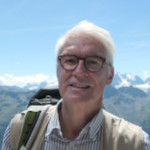 Degree in Physics, University of Padua; Post Graduate School in Maritime and Coastal Engineering, University of Padua. In 1996-1997 Human Capital Mobility EC grant at Proudman Oceanographic Laboratory (Birkenhead-Liverpool, UK) where he made research on numerical and physical sensitivity in coastal and shallow water environments.
Degree in Physics, University of Padua; Post Graduate School in Maritime and Coastal Engineering, University of Padua. In 1996-1997 Human Capital Mobility EC grant at Proudman Oceanographic Laboratory (Birkenhead-Liverpool, UK) where he made research on numerical and physical sensitivity in coastal and shallow water environments.
Researcher at CNR from 1998, presently Director of Research at the Institute of Polar Sciences of the Italian National Research Council (CNR-ISP). He has done research work on wind wave modelling and on coastal processes with special focus on sediment transport; the models used are numerical wave and sediment transport models coupled with 3D circulation models. His research interests currently are the physical processes at the air-water and water-sediment interfaces, the wave-current coupling and the wave climate variations due to climate changes and their impact on coastal vulnerability. Other interests include the application of indicators for the integrated management of the coastal zone and the measurements of wave spectra with stereoscopic techniques.
Co-author of more than 70 scientific papers in ISI journals and of more than 150 conference papers; co-author of 2 patents and editor of MEDATLAS: Wind and Wave Atlas of the Mediterranean Sea. He participated in and coordinated several national and international research projects. In 2017 and 2018 he has been Head of the Institute of Marine Sciences of the Italian National Research Council (CNR-ISMAR).
Scopus - Author ID: 7004338399 Google Scholar Research Gate
Barbante Carlo
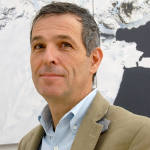 Director from the 1st May 2020 until the 30th April 2024.
Director from the 1st May 2020 until the 30th April 2024.
Full Professor at the Ca’ Foscari University of Venice, he has been dealing with analytical methods development and paleoclimatic reconstructions since many years. He has participated in several expeditions in polar regions and in the Alps and is author of more than 250 publications in high impact scientific journals (h-index 45).
Professor of Earth's Climate at Ca' Foscari Harvard Summer School, he has been recently granted by the European Research Council with a prestigious Advanced Grant. He has been professor at the Accademia Nazionale dei Lincei (2012-2014) and is an elected member of the Accademia delle Scienze detta dei XL and of the Istituto Veneto di Scienze Lettere ed Arti. He is currently past-President of the Italian Society for Climate Sciences and National Representative in the H2020 Programme Committee on Climate Action, Environment, Raw Material and Resource Efficiency.
Cryosphere
The increasingly evident melting of the ice sheets and glaciers with the consequent changes in sea level, together with the destruction of the ice shelves, highlight how this part of the cryosphere is an extremely fragile portion of the Earth system. Glaciers are unique climate archives that give us the opportunity to investigate the climate of the past and to assess the changes taking place with a long-term perspective. However, these changes are also evident from the melting of the permafrost, which has a dramatic impact in polar and high-altitude mid-latitudes areas. In the difficult context of climate change, the researchers of the Institute of Polar Sciences, through their interrelated research activities, deal with the study of snow and ice, their chemical composition and their main physical parameters, the evolution of the permafrost and the impact of increased melting on the atmosphere, biosphere and hydrosphere at both regional and global levels.
Snow cover
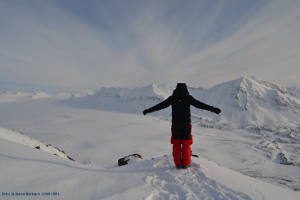 As well as affecting the mass balance of glaciers and polar ice caps, snow preserves the chemical composition of the atmosphere and interacts dynamically with all other environmental components of the polar regions. It represents an extremely reactive portion of the cryosphere where multiple post-depositional processes can occur. The study of snow cover in these regions is therefore essential to understanding the processes, interactions and changes that are occurring as a result of climate change and help us to assess the impacts on the global system. It is also critical for understanding the mechanisms of re-emission and release of compounds accumulated during the polar night and the significant impact that these releases may have on polar bio-geochemical cycles.
As well as affecting the mass balance of glaciers and polar ice caps, snow preserves the chemical composition of the atmosphere and interacts dynamically with all other environmental components of the polar regions. It represents an extremely reactive portion of the cryosphere where multiple post-depositional processes can occur. The study of snow cover in these regions is therefore essential to understanding the processes, interactions and changes that are occurring as a result of climate change and help us to assess the impacts on the global system. It is also critical for understanding the mechanisms of re-emission and release of compounds accumulated during the polar night and the significant impact that these releases may have on polar bio-geochemical cycles.
Photo by Elena Barbaro (CNR-ISP)
Col Margherita Observatory
High-altitude weather and climate observatory of Col Margherita (MRG)
Regional Station GAW-WMO
The Col Margherita High Altitude Observatory (MRG) is located on the southern slope of the Eastern Alps (46.37 N, 11.79 E), at an altitude of 2543 meters above sea level. The site is located within the Dolomites, a UNESCO World Heritage Site, and is considered strategic, because despite not being at a particularly high altitude, it is representative of the synoptic conditions of the south-facing Eastern Alps, where there is no similar station. The main characteristics of the site are that it represents the synoptic conditions of the free troposphere at that height and pressure (700 hpa), as there are few the orographic barriers in the surrounding area and there is an absence of local pollution sources.
Instrumentation currently installed at the observatory:
- full meteorological station: temperature, humidity, wind speed and direction, atmospheric pressure, incident and reflected solar radiation, sensors for the measurement of atmospheric precipitation and snow cover height;
- mercury analyser;
- temperature controlled bulk deposition sampler for the collection of precipitation for mercury analysis;
- bulk deposition samplers to collect samples for the analysis of organic, inorganic and stable isotopes in precipitation.
Follow us on Twitter
History
The Col Margherita Observatory was built in 2012 in the framework of GMOS Project (2013-2015) and it was subsequently operational within the Nextdata (2016-2018) and I-GOSP (2018-2020) projects. The observatory is equipped with a complete meteorological station, an ozone analyser and a total gaseous mercury analyser. The station is fully automated. It is connected to the main power grid and is also equipped with a solar power backup system with ~200ah of batteries in case of network failure. The observatory is equipped with a remote control via GSM/GPRS technology. The site, due to its proximity to the cable car of the San Pellegrino Ski is accessible, and can be used for seasonal sampling campaigns for snow, and wet and dry atmospheric deposition.
Special Issue: Air Pollution in the Polar Regions: Levels, Sources and Trends (deadline 25 February 2021)
 A special issue of Atmosphere (ISSN 2073-4433). This special issue belongs to the section "Air Quality".
A special issue of Atmosphere (ISSN 2073-4433). This special issue belongs to the section "Air Quality".
Deadline for manuscript submissions: 25 February 2021.
International School on INtegrated Environmental Studies in the Arctic (INES) with respect to climate changes
 INES plan of fall webinars 2020, 28 September – 2 October 2020
INES plan of fall webinars 2020, 28 September – 2 October 2020
All webinars will be held at the same times (CEST): 10:00 – 11:00 and 11:30 – 12:30 each day between 28 September and 2 October 2020. - WEB SITE
Webinars are open to the public, and all meetings will be recorded.
Tesi Tommaso
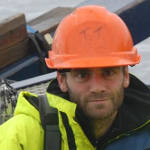 MS (2003) and PhD (2006) in Environmental Marine Sciences (University of Bologna).
MS (2003) and PhD (2006) in Environmental Marine Sciences (University of Bologna).
Dr. Tesi research focuses on climate change in present and ancient systems affecting sea ice and permafrost. He was awarded with two Marie Curie fellowships to work at the Oregon State University (USA) and University of Stockholm (Sweden). He is in the Editorial Board of the Marine Chemistry journal (Elsevier) with focus on marine organic biomarkers and Guest Editor of the Ocean Science journal (Copernicus). He is the Italian representative and member of IASC (International Arctic Science Committee) Marine Working Group. He has published 50 scientific papers in peer-reviewed journals dealing with the use of fossil biomarkers to investigate modern and paleo climate change. He served as chairman at the European Geosciences Union (EGU) meeting in Vienna (Austria) and at the American Geophysical Union (AGU) Fall meeting in San Francisco (USA). He has participated to 17 oceanographic expeditions in the Mediterranean Sea and Arctic combined accounting for over 200 days of at sea activities.
![]() http://orcid.org/0000-0002-1686-3375
http://orcid.org/0000-0002-1686-3375
Vitale Vito
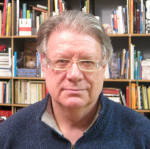 Director of Research at the CNR Institute of Polar Sciences (ISP) in Bologna, involved in polar research and management since 1986, both in Antarctica and in the Arctic. I am an expert of radiative transfer processes into the atmosphere, with research focus on radiation budget and role that atmospheric composition and surface characteristics play in modulating Shortwave (SW) and Longwave (LW) radiation components, determining their seasonal and inter-annual variability. In the last 10-15 years, I also promote implementation of complex and multidisciplinary observing platforms, as the Amundsen-Nobile Climate Change Tower at Ny Alesund, to investigate coupling processes at the air-snow-land interface and in the Atmospheric Boundary Layer (ABL).
Director of Research at the CNR Institute of Polar Sciences (ISP) in Bologna, involved in polar research and management since 1986, both in Antarctica and in the Arctic. I am an expert of radiative transfer processes into the atmosphere, with research focus on radiation budget and role that atmospheric composition and surface characteristics play in modulating Shortwave (SW) and Longwave (LW) radiation components, determining their seasonal and inter-annual variability. In the last 10-15 years, I also promote implementation of complex and multidisciplinary observing platforms, as the Amundsen-Nobile Climate Change Tower at Ny Alesund, to investigate coupling processes at the air-snow-land interface and in the Atmospheric Boundary Layer (ABL).
Research activities in this period included also (i) studies on effects of ozone depletion events in the Arctic on UV surface fluxes and their propagation at lower latitudes, (ii) investigation of snow surface albedo (broadband, spectral) and melting process, (iii) observations of aerosol vertical profiles (stratification) in polar (ABL) with tethered balloon (iv) improvement of polar night aerosol measurements thanks to the new lunar photometric technique. Always interested to improve observation capabilities in/for harsh environments, developing also custom instrumentation. At the moment, efforts are devoted to develop new systems for snow optical characteristics (spectral albedo, BRDF reflectance), as well as to improve atmospheric measurements over the ocean in general, and in particular quality, continuity and accuracy of ship measurements of radiation, cloudiness characteristics, and columnar aerosol (AOT).
![]() https://orcid.org/0000-0003-0978-8976 Scholar
https://orcid.org/0000-0003-0978-8976 Scholar
Giordano Patrizia
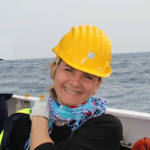 Degree in Geological Sciences - University of Bologna, 1999. Researcher at the CNR ISMAR in Bologna, 2000- 2019. Researcher at the CNR-ISP in Bologna, 2019-present.
Degree in Geological Sciences - University of Bologna, 1999. Researcher at the CNR ISMAR in Bologna, 2000- 2019. Researcher at the CNR-ISP in Bologna, 2019-present.
She deals with sedimentological, mineralogical and biogeochemical reconstructions, transport pathways and depositional processes of the bottom sediments and suspended particles; assessments of impact by inputs of nutrients and contaminants from urban, industrial, harbours, aquaculture and offshore activities in lakes, transitional environments, and coastal to deep marine ecosystems. She specialized in the phosphorus cycle to identify the causes of the onset of dystrophic crises, anoxic crises and mucilaginous phenomena. She studies the biogeochemical cycles of carbon, nutrients and metals, their speciation, early diagenesis processes, bioavailability and benthic flows at the water-sediment interface.
She has been participated to the deployment and management of permanent automatic buoy stations and moorings and the development, calibration and validation of sediment incubators, benthic chambers and landers for the measurement, sampling and analysis of marine environmental parameters for marine researches and monitoring.
She is involved in the study of carbon, nutrients, contaminants and organic matter in particulates and in their calculations of mass balance, vertical flows and lateral transport from the continental shelf to deep basins.
Participation in EC, PRA and PNRA Projects, Conventions with Italian Regional Authorities and Contracts with large and small-medium Enterprises. PI or WP leader of national and international projects. More than 50 oceanographic cruises (25 as Chief Scientist). Supervisor and tutor in over 30 degree thesis and traineeships. Author and co-author of ca. 100 scientific reports, 20 publications, 50 abstracts, 149 citations, H index = 8 (Scopus).
![]() http://orcid.org/0000-0001-5662-2659 Scopus
http://orcid.org/0000-0001-5662-2659 Scopus
Zecchetto Stefano
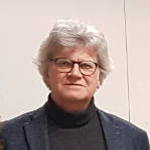 Master degree in Physics at the Padova University. Researcher at CNR since 1988. The main research activity is on the field of Earth Observarion, carried out using active instruments (Synthetic Aperture Radar-SAR, scatterometer), to monitor the sea surface, with the main focus on the meteorological processes at meso and micro scales (below 5 km) and on the extraction geophysical parameters from the SAR images. He is involved in alpine glaciers modelling, to study their evolution under the different scenarios of the climate change.
Master degree in Physics at the Padova University. Researcher at CNR since 1988. The main research activity is on the field of Earth Observarion, carried out using active instruments (Synthetic Aperture Radar-SAR, scatterometer), to monitor the sea surface, with the main focus on the meteorological processes at meso and micro scales (below 5 km) and on the extraction geophysical parameters from the SAR images. He is involved in alpine glaciers modelling, to study their evolution under the different scenarios of the climate change.
He coordinated projects with ESA (European Space Agency) and is co-investigator in projects of ASI (Agenzia Spaziale Italiana). At present he is Principal Investigator of IsCSK4MOSAiC, an ASI and CNR project, to provide to the artic expedition MOSAiC (mosaic-expedition.org, September 2019-September 2020) SAR images of CosmoSkyMED in near real time.
He is associated professor of Remote Sensing at the Persian Gulf University, Bushehr, Iran.
Current position: retired
Scopus - Author ID: 6701758544 ![]() http://orcid.org/0000-0003-4633-1238 WoS Researcher ID: O-2523-2015
http://orcid.org/0000-0003-4633-1238 WoS Researcher ID: O-2523-2015
Viola Angelo Pietro
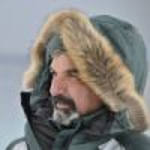 In memory (1955 - 2023)
In memory (1955 - 2023)
He graduated degree in Physics at the University of Rome La Sapienza a thesis in physical oceanography. Hired in 1984, in the CNR he carried out research in the field of satellite remote sensing of the sea surface. In 1992 he began to deal with processes in the atmospheric boundary layer using acoustic remote sensing from the ground. He collaborated in the development and implementation of sodar (SOund Detection and Ranging) in the development of new methodologies for observing the lower atmosphere. As part of these activities, he participated in several campaigns in Antarctica at the Mario Zucchelli and Concordia stations, for the study of the dynamic characteristics of the atmospheric boundary layer in a polar environment.
Since 2009 he has oriented his research activity on the processes relating to climate change in the Arctic polar region, which has seen a strong revival of research in the atmosphere, with the construction of the Climate Change Tower, an important infrastructure to measure physical parameters of the lower atmosphere, for which he is responsible. He currently has a coordination role in the working group of the Italian research activities at Svalbard, he represents the CNR in the NYSMAC and is included in the SIOS coordination working groups for the data management in Svalbard (SDMS) and he is Chair of the WG for Research Infrastructures Coordination Committee (RICC). He is also one of the Italian representative within the Arctic Council's AMAP (atmospheric monitoring) working group. Finally, he is the scientific manager of the IADC (Italian Arctic Data Center) the digital infrastructure for the management of data collected at the Arctic station Dirigibile Italia.
Scopus - Author ID: 7005414768 ![]() http://orcid.org/0000-0002-6545-7496 Google Scholar
http://orcid.org/0000-0002-6545-7496 Google Scholar
Di Franco Sabina
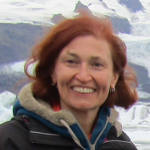 Geologist, from 2003 technologist at the National Research Council of Italy (CNR). Her research interests are in knowledge organisation, science language, terminology tools (Thesauri, Glossaries, and Ontologies) and environmental assessment (impact studies reports and emission inventories). Experience in planning, designing and implementing webGIS and GIS, focusing especially on thematic cartography.
Geologist, from 2003 technologist at the National Research Council of Italy (CNR). Her research interests are in knowledge organisation, science language, terminology tools (Thesauri, Glossaries, and Ontologies) and environmental assessment (impact studies reports and emission inventories). Experience in planning, designing and implementing webGIS and GIS, focusing especially on thematic cartography.
Research Gate
Plini Paolo
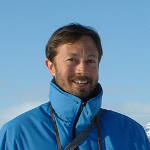 Graduated in Natural Sciences in 1984.
Graduated in Natural Sciences in 1984.
CNR researcher since 1994 at the Institute of Biomedical Technologies (CNR-ITBM). Since 2002 at the Institute on Atmospheric Pollution (CNR-IIA). From 2019 to the Institute of Polar Sciences (CNR-ISP).
CNR macro areas of reference: Earth and Environment.
Research interests:
- environmental and geographical knowledge organization
- qualitative and quantitative analysis of vertebrate fauna
- Geographic Information Systems
- military geosciences
He currently carries out research on conceptual development and technological innovation in the field of knowledge organization, controlled terminology and multilingual thesauri for the environment. He collaborated, among others, with the United Nations Environment Program (UNEP), with the European Environment Agency (EEA), with the American Environmental Protection Agency (US EPA). He is co-author of the UNEP-Infoterra Thesauri, GEMET, GEneral Multilingual Environment Thesaurus and EARTh, Environmental Applications Reference Thesaurus.
Scopus - Author ID: 25121723300 ![]() http://orcid.org/0000-0001-7315-3364
http://orcid.org/0000-0001-7315-3364
Salvatori Rosamaria
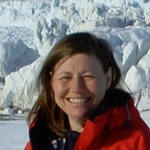 Graduated in Geological Sciences (1981), obtained her PhD in Earth Sciences (1987) at the University of Rome La Sapienza. She started her scientific activity at CNR during her PhD and in 2001 become senior researcher at CNR-IIA. In 2019, she joined the CNR-Institute of Polar Science. She is Adjunct Professor in Remote Sensing and GIS at the Dept. of Ecobiology (University of Roma Sapienza) since 2011.
Graduated in Geological Sciences (1981), obtained her PhD in Earth Sciences (1987) at the University of Rome La Sapienza. She started her scientific activity at CNR during her PhD and in 2001 become senior researcher at CNR-IIA. In 2019, she joined the CNR-Institute of Polar Science. She is Adjunct Professor in Remote Sensing and GIS at the Dept. of Ecobiology (University of Roma Sapienza) since 2011.
Scientific interests: environmental studies, at local and global scale, in Polar and Mediterranean areas using multi-sensor and multi-platform remote sensing images; geostatistical analysis of environmental data and thematic cartography in GIS environment.
Her research activity is focused on the study of the spectroradiometric properties of natural surfaces (from Visible to Thermal Infrared range) aimed to the interpretation and analysis of products deriving from Earth Observation.
Since 1997, she was involved in field surveys in Polar Regions (Antarctica and Arctic) to study the radiometric properties of snow and ice, and the interactions at snow/air/soil interface.
People CNR
Valentini Emiliana
 Graduated in Biological Sciences (2006) at Sapienza University, Rome and PhD in Ecology and Natural Resources Management (2013),Tuscia, University, Viterbo. She recently joined as researcher the CNR, Institute of Polar Sciences (2020) in Rome (Montelibretti) and she is lecturer in Remote Sensing and GIS for the Master Degree Course in Ecobiology at Sapienza, University, Rome.
Graduated in Biological Sciences (2006) at Sapienza University, Rome and PhD in Ecology and Natural Resources Management (2013),Tuscia, University, Viterbo. She recently joined as researcher the CNR, Institute of Polar Sciences (2020) in Rome (Montelibretti) and she is lecturer in Remote Sensing and GIS for the Master Degree Course in Ecobiology at Sapienza, University, Rome.
Her scientific activities started with studies on the anthropogenic impacts in marine and coastal environments and in 2011 she joined the team of technical research collaborators at the Italian Institute for Environmental Protection and Research as an expert in ecology and geospatial application to environmental monitoring with a permanent position.
Her research spans from terrestrial to aquatic sphere and includes the use of remote sensing principles and methods in the field of ecology, geography and environmental sciences. She develops integrated models for ecosystem services assessment, natural capital estimation and natural resources monitoring, considering bio-geosphere cross scales interaction and addressing landscape spatial patterns and temporal process. She has experience in national and international research and capacity building projects, publications and dissemination in scientific contexts. She actively participates in the GEOBON Ecosystem Structure working group and in the technical roundtables supporting the European Copernicus and National Space Economy programs.
Argiriadis Elena
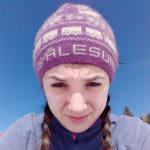 Current position: Researcher at Institute of Polar Sciences-CNR, Venezia; permanent position.
Current position: Researcher at Institute of Polar Sciences-CNR, Venezia; permanent position.
Previously: post-doc researcher at the Department of Environmental Sciences, Informatics and Statistics of Ca’ Foscari University of Venice after she obtained a PhD in Science and Management of Climate Change from the same university (2016). Study grant holder at the Department of Environmental Sciences, Informatics and Statistics of Ca’ Foscari University of Venice since 2011, after the master’s degree in Environmental Sciences.
Among her main research interests are atmospheric sampling and monitoring, gas chromatographic-mass spectrometric analyses and development of analytical methods for the determination of persistent organic pollutants in the atmosphere and of biomarkers in lake sediments. Her present activity is mainly focused on the characterization of organic proxies in sediments, soils and stalagmites, aimed in particular at reconstructing paleofires, human presence and the composition of vegetation during the Holocene.
She collaborated and collaborates to several national and international (EU-FP7, EU-H2020, NSF-DEB) research projects and coordinates the “BioCyCLeS” project, funded under the National Antarctic Research Program (PNRA 2018). She co-authored 14 papers on international journals with more than 240 citations (h-index 7). She co-supervised 12 degree theses and took part in the scientific secretariat and logistical organization of the Annual Conference of the Italian Society for Climate Sciences (SISC) in 2017 and 2018.
Lodi Rachele
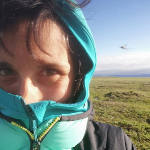 She attained the master’s degree with honours in Applied and Environmental Geology at the University of Turin in 2010, with a thesis entitled Distribution, origin and consequences of fluoride content in groundwater in an area of the central sector of the Ethiopian Rift. She specialized in the collection, analysis and dissemination of data in developing countries and in geological and hydrogeological mapping and modelling through GIS data management. The working experience in the Alpine environment allowed the deepening into pedological and geochemical subjects. She worked as study grant holder on the Nunataryuk EU-funded Horizon 2020 project, coordinated by the Alfred Wegener Institute, that aims to assess arctic permafrost thaw and study how it contributes to climate change.
She attained the master’s degree with honours in Applied and Environmental Geology at the University of Turin in 2010, with a thesis entitled Distribution, origin and consequences of fluoride content in groundwater in an area of the central sector of the Ethiopian Rift. She specialized in the collection, analysis and dissemination of data in developing countries and in geological and hydrogeological mapping and modelling through GIS data management. The working experience in the Alpine environment allowed the deepening into pedological and geochemical subjects. She worked as study grant holder on the Nunataryuk EU-funded Horizon 2020 project, coordinated by the Alfred Wegener Institute, that aims to assess arctic permafrost thaw and study how it contributes to climate change.
Present position: PhD Student at University Ca' Foscari Venezia, PhD in Polar Sciences; title of proposal: Modelling the fate of POPs distribution in permafrost: combine large scale to local perspective.
Dreossi Giuliano
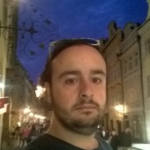 Graduated in Environmental Sciences (bachelor’s degree: University of Milano-Bicocca, master’s degree: University of Trieste). PhD in Science and Management of Climate Change at the Ca’ Foscari University of Venice.
Graduated in Environmental Sciences (bachelor’s degree: University of Milano-Bicocca, master’s degree: University of Trieste). PhD in Science and Management of Climate Change at the Ca’ Foscari University of Venice.
Actual position: temporary science researcher at the Institute of Polar Sciences of the National Research Council of Italy (ISP-CNR) in Venice. I had previously a research fellowship and occasional collaboration contract at the Department of Mathematics and Geosciences of the University of Trieste, research fellowships at the Department of Environmental Sciences, Informatics and Statistics of the Ca’ Foscari University of Venice, research fellowships at the IDPA-CNR (then ISP-CNR) and a scholarship on the Italy-Slovenia InterReg project ACQUAVITIS at the Department of Environmental Sciences, Informatics and Statistics of the Ca’ Foscari University of Venice.
Principal Investigator of the PNRA 2018 project WHETSTONE on daily precipitation at Dome c, Antarctica. I have been collaborating with prof. Barbara Stenni for more than a decade and more recently with doc. Mauro Masiol. My research field is the isotopic geochemistry of water molecules, applied to polar and Alpine ice core for paleoclimate reconstructions, to Antarctic precipitation, to local precipitation in the Veneto region, Friuli Venezia Giulia, Slovenia and other areas, to surface and deep waters, sea water and water extracted from plants and soils.
I use Isotope Ratio Mass Spectrometry (IRMS) coupled with an HDO equilibration device and GasBench and also Laser Absorption Spectroscopy coupled with an autosampler and vaporizer and with an Induction Module for oxygen and hydrogen isotopic composition measurements.
I participated in the processing of the Ortles Alpine ice core in the cold room of the Ca’ Foscari University/CNR in Venice and of the SolarIce Antarctic ice core in the EuroCold lab at the University of Milano-Bicocca.
Scopus - Author ID: 57191615614
De Blasi Fabrizio
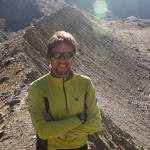 Master’s degree in Forest and Environmental Science (University of Padua), PhD in Land Environment Resources and health (University of Padua).
Master’s degree in Forest and Environmental Science (University of Padua), PhD in Land Environment Resources and health (University of Padua).
Current position: Researcher at Institute of Polar Sciences-CNR, Venezia; permanent position. Since 2010, my research activities have been on mountain and environmental science with a focus on the relationship between climate change and snow and ice dominated high altitude environments.
After my master’s degree, my activities were on geomorphology, hydrology and glaciology at TESAF department of the University of Padua. I have analyzed the interaction between the climatic variations of the last century (e.g. modification of the thermo-pluviometric regimes) and the changes of the Alpine cryosphere (e.g. variations in volume, variation of the seasonal snow cover etc.) as well as the consequences of global warming on the evolution of the glacial masses over thousands of years. During last years, I collaborated with international research projects such as Ortles project (a paleoclimatic research project) and POLLiCE project (analysis of pollen present on ice cores from the Alps).
My topic is on the analysis of climate evolution during the last 2000 years through the study of Alpine and Apennine ice cores. Since 2017, I am in the Italian team of Ice Memory, an international mountain glaciers salvage program research project. At the same time, I'm collaborating to the Col Margherita Atmospheric Observatory (MRG) project with the aim of measuring the atmospheric composition above 2500 m in the Dolomitic region.
Scopus - Author ID: 56674114400
Special Issue: Microbial Life in the Cold: A Focus on Extreme Aquatic Environments (deadline 20 December 2022)
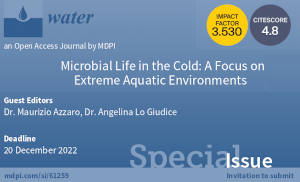 A special issue of Water (ISSN 2073-4441). This special issue belongs to the section Biodiversity and Ecosystem Functioning. Deadline for manuscript submissions: 20 December 2022.
A special issue of Water (ISSN 2073-4441). This special issue belongs to the section Biodiversity and Ecosystem Functioning. Deadline for manuscript submissions: 20 December 2022.
Special Issue Editors: Dr. Maurizio Azzaro, Dr. Angelina Lo Giudice - Institute of Polar Sciences, National Research Council, Italy (CNR-ISP)
Dallo Federico
 Federico Dallo received his Master’s degree in Chemistry (LM-54) from the University of Ferrara in 2013, specializing in theoretical and computational chemistry under Prof. Celestino Angeli. In 2017, he earned a Ph.D. in Environmental Sciences from Ca’ Foscari University of Venice, focusing on volatile organic compound diffusion in snowpack under Prof. Carlo Barbante. From 2017 to 2020, he was a Research Fellow at CNR-IDPA/CNR-ISP, working on low-cost environmental monitoring technologies at the Col Margherita meteo-climatic observatory in alpine and polar regions. From 2021 to 2023, he was a Marie Skłodowska-Curie Postdoctoral Fellow, conducting research on wireless sensor networks in collaboration with the University of California, Berkeley. Since 2024, Federico has been a full-time researcher at CNR-ISP in Venice, focusing on the relationship between human behavior and environmental hazards to inform policy and interventions for societal resilience and public health.
Federico Dallo received his Master’s degree in Chemistry (LM-54) from the University of Ferrara in 2013, specializing in theoretical and computational chemistry under Prof. Celestino Angeli. In 2017, he earned a Ph.D. in Environmental Sciences from Ca’ Foscari University of Venice, focusing on volatile organic compound diffusion in snowpack under Prof. Carlo Barbante. From 2017 to 2020, he was a Research Fellow at CNR-IDPA/CNR-ISP, working on low-cost environmental monitoring technologies at the Col Margherita meteo-climatic observatory in alpine and polar regions. From 2021 to 2023, he was a Marie Skłodowska-Curie Postdoctoral Fellow, conducting research on wireless sensor networks in collaboration with the University of California, Berkeley. Since 2024, Federico has been a full-time researcher at CNR-ISP in Venice, focusing on the relationship between human behavior and environmental hazards to inform policy and interventions for societal resilience and public health.
Federico is an affiliated researcher at:
• the University of California, Berkeley
• the University of Sydney
Research Projects
• healthRiskAdapt (HORIZON-MISS-2023-CLIMA-01)
• MISO (HORIZON-CL6-2022-GOVERNANCE-01-07)
• PIONEER (MSCA-IF-2018)
Zucchetta Matteo
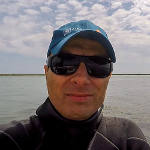 Researcher at the Institute of Polar Sciences (ISP) of the Italian National Research Council (CNR) since July 2020. Previously researcher at the University Ca’ Foscari Venice (Italy) and at the Italian Institute for Environmental Protection and Research (ISPRA). He received his PhD in Environmental Sciences from the University Ca’ Foscari Venice (Italy), after a thesis entitled “Habitat distribution models for the management of fishery and conservation concern species in lagoon environment”. His work was carried out in the framework of different EU (FP7, Horizon 2020, Interreg) and Italian (PRIN) projects, and his main research topics are: 1) analysis of the spatial distribution of plant and animal species in coastal water bodies; 2) Community ecology in transitional water ecosystems; 3) Use of fish fauna assemblages as indicators of ecosystem ecological status; 4) Ecological models for food webs analysis; 5) Climate change effects on aquatic ecosystems.
Researcher at the Institute of Polar Sciences (ISP) of the Italian National Research Council (CNR) since July 2020. Previously researcher at the University Ca’ Foscari Venice (Italy) and at the Italian Institute for Environmental Protection and Research (ISPRA). He received his PhD in Environmental Sciences from the University Ca’ Foscari Venice (Italy), after a thesis entitled “Habitat distribution models for the management of fishery and conservation concern species in lagoon environment”. His work was carried out in the framework of different EU (FP7, Horizon 2020, Interreg) and Italian (PRIN) projects, and his main research topics are: 1) analysis of the spatial distribution of plant and animal species in coastal water bodies; 2) Community ecology in transitional water ecosystems; 3) Use of fish fauna assemblages as indicators of ecosystem ecological status; 4) Ecological models for food webs analysis; 5) Climate change effects on aquatic ecosystems.
Google Scholar ![]() https://orcid.org/0000-0002-5431-6751 ResearchGate
https://orcid.org/0000-0002-5431-6751 ResearchGate
Di Mauro Biagio
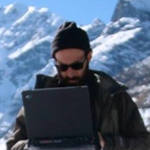 Dr. Di Mauro received his Master and Bachelor degrees in Environmental Sciences at the University of Milano-Bicocca (Milan, Italy). At the same University, he gained a Ph.D. in 2016 with a thesis on the impact of light-absorbing impurities in snow and ice. He has been post-doctoral researcher until 2020. In 2017, he completed a short-term scientific mission at the al Centre national de la recherche scientifique (CNRS) in Grenoble (France). In 2019 and 2020 he has been visiting scientist at the Chiba University and at the Meteorological Research Institute (Tsukuba) in Japan.
Dr. Di Mauro received his Master and Bachelor degrees in Environmental Sciences at the University of Milano-Bicocca (Milan, Italy). At the same University, he gained a Ph.D. in 2016 with a thesis on the impact of light-absorbing impurities in snow and ice. He has been post-doctoral researcher until 2020. In 2017, he completed a short-term scientific mission at the al Centre national de la recherche scientifique (CNRS) in Grenoble (France). In 2019 and 2020 he has been visiting scientist at the Chiba University and at the Meteorological Research Institute (Tsukuba) in Japan.
From July 2020 he is researcher at the Institute of Polar Sciences (ISP) at the National Research Council (CNR). During his career, dr. Di Mauro has been interested in the remote sensing of the cryosphere with a focus on the optical and thermal properties of snow and ice.
Dr. Di Mauro has been involved in several research projects funded by the Italian Space Agency (ASI) and the European Space Agency (ESA). He is now coordinating the BioGeoAlbedo project supported by the National Program for research in Antarctica (PNRA).
Google Scholar
Zangrando Roberta
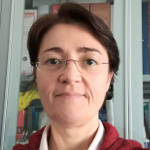 Since 2011 she was a research scientist at the IDPA-CNR Venice. Since June 2019 has been working at the ISP-CNR. Her research interests include: creating new analytical methods using HRGC-LRMS, HRGC-HRMS, HPLC-HRMS and HPLC-MS/MS for the determination of organic micropolluttants, tracers and biomarkers, and chemical characterization of organic fraction of environmental matrices. She actively participates in PNRA Antarctic, Arctic and European Projects.
Since 2011 she was a research scientist at the IDPA-CNR Venice. Since June 2019 has been working at the ISP-CNR. Her research interests include: creating new analytical methods using HRGC-LRMS, HRGC-HRMS, HPLC-HRMS and HPLC-MS/MS for the determination of organic micropolluttants, tracers and biomarkers, and chemical characterization of organic fraction of environmental matrices. She actively participates in PNRA Antarctic, Arctic and European Projects.
Venier Chiara
 BSc and MSc Degree in Environmental Sciences (Ca 'Foscari University of Venice), PhD in Civil and Environmental Engineering Sciences (University of Padua). Current position: Technologist at the Institute of Polar Sciences of CNR.
BSc and MSc Degree in Environmental Sciences (Ca 'Foscari University of Venice), PhD in Civil and Environmental Engineering Sciences (University of Padua). Current position: Technologist at the Institute of Polar Sciences of CNR.
Formerly: Postdoctoral Research Fellow and Technologist (Institute of Marine Sciences of the CNR -Venice 2014-2019); Short Term Mobility Grant (Center of Excellence for Environmental Decisions, University of Queensland, Brisbane, Australia 2016); courses and master in European project design 2012-2014; Postdoctoral Research Fellow (Ca 'Foscari University Venice 2012-2014); collaboration contract (ARPAV Water Sector, Padua, 2011); "user" researcher for experimental activities at the Total Environment Simulator Facility (University of Hull, UK, 2009); collaboration contract ( International Center of Hydrology "Dino Tonini", University of Padua 2006-2007); Internship Grants at Portland State University (Portland, Oregon, US) 2006 and at the Scripps Institution of Oceanography (San Diego, California, US) 2005.
Currently involved, as project manager, in the European project H2020 Beyond EPICA Oldest Ice Core: 1,5 Myr of greenhouse gas –climate feedbacks. Research activity on the ice sheet mass balance topic, including Earth Observation data analyses. Formerly, research and research support activities on Maritime Spatial Planning (MSP) topic, working on geospatial data management and analysis, developing interoperable spatial data infrastructure. Specific expertise on the application of Marxan decision support tool for multi-objective spatial prioritization. Also, expertise on aquaculture site selection through geospatial analysis, ecosystem services for the MSP, cumulative impact and conflict of use analyses. Supporting coordination activities in the framework of several national and international projects, with interest also to the science to policy aspects.
Scopus - Author ID: 54928529600 ![]() http://orcid.org/0000-0001-6880-2745
http://orcid.org/0000-0001-6880-2745
Vardè Massimiliano
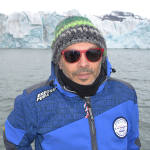 Born in Vibo Valentia. Currently, he is Researcher (permanent position) at the Institute of Polar Sciences – CNR, since June 2019.
Born in Vibo Valentia. Currently, he is Researcher (permanent position) at the Institute of Polar Sciences – CNR, since June 2019.
- Degree (MS) in Chemistry (University of Rome “La Sapienza”);
- Master's Diploma at the Department of Chemical Engineering (University of Rome “La Sapienza”);
- Doctoral school in Chemical, Environmental and Safety Engineering (University of Rome “La Sapienza”), and Doctoral school in Chemical Sciences (University of Ferrara) where He obtained his PhD. Previously.
He carried out research activities at the:
- Institute for the Dynamics of Environmental Processes (CNR-IDPA) in Venice,
- Institute of Atmospheric Pollution Research (CNR-IIA) in Montelibretti (Rome), and afterwards in Rende (Cosenza),
- Institute of Hygiene “G. Sanarelli“/Department of Public Health (University of Rome “La Sapienza”).
He taught General and Inorganic Chemistry, and Organic Chemistry at the University of Rome "La Sapienza" as Adjunct Professor (Professore a contratto) (2008-2019). He collaborated with several research groups, developing and optimizing active and passive sampling strategies and chemical analytical methods for organic and inorganic micro pollutants (PCDDs, PCDFs, PCBs, PAHs, COVs, and heavy metals) as well as major ions. He applied chromatographic methods, in particular, gas-chromatography/mass spectrometry, to matrices such as ambient air, atmospheric particulate matter, atmospheric deposition and natural waters. His interests have been focused on quantifying levels of contaminants, studying their transport, dynamics, fate and environmental impacts, in urban, rural and remote areas. In recent years he has been focusing on the determination of mercury at ultra-trace levels by using atomic fluorescence techniques, in air and atmospheric deposition, as well as in potable waters. He has substantially improved some analytical aspects by eliminating the operational criticalities associated with Hg detection. In the framework of the Global Mercury Observation System (GMOS) project, coordinated by the Institute of Atmospheric Pollution Research (CNR-IIA). He was responsible for analytical mercury measurements in bulk and wet-only deposition samples from different remote sites at the CNR-ISP.
He is member of the research group carrying out measurements at the high-altitude Observatory of Col Margherita (MRG) in the Eastern Alps (Belluno Dolomites). This activity is within the scope of the iGOSP (Integrated Global Observing Systems for Persistent Pollutants, strand 3 - Global Change and Environmental Treaties) of the European ERA-PLANET project (2017-2020). He has been involved in several measurement campaigns, in an oceanographic campaign in the Mediterranean Sea on board the research vessel R/V “Urania” as Chief-Scientist, and in research activities (e.g. Integrative and Comprehensive Understanding on Polar Environments- iCUPE and Microtracer projects) at the CNR Arctic Station “Dirigibile Italia” as “Acting Station Leader” and “Field Scientist” in Ny-Ålesund, Svalbard Islands, Norway (Four expedition, 2018-2022). In 2022, he was appointed as RSU (Trade-Union Representative) and as RLS (Workers Safety Representative) for the CNR Research Institutes of the Venice area.
Publications Google Scholar Research gate
Turetta Clara
 Degree M.Sc. Geology (University of Padua).
Degree M.Sc. Geology (University of Padua).
Current position: Researcher at Institute of Polar Sciences-CNR, Venezia; permanent position.
Previously: Researcher at the Institute for the Dynamics of Environmental Processes – CNR; scholarship at Università Ca’ Foscari di Venezia (Italy); fellowship at Università Ca’ Foscari di Venezia (Italy); research assistant at Institut de Biogeochimie Marine - ENS – CNRS, France.
Fields of interest: trace elements in real matrices (waters, particulate, microlayer, sediments, snow and ice) using ICP-mass spectrometry. Stable isotopes (δD, δ13C, δ15N, δ18O) in water, snow and ice by means of IR-mass spectrometry. Geochemical characterization of oceanic water masses. Rare earth elements as geochemical tracer in natural water systems: in snow and ice for paleoclimatic reconstruction, in aerosol as tracer of source area. Characterization of natural systems (seawater, particulate, sediments) via chemometrics tools.
Recent Research Projects - H2020: Beyond Epica (2019-2025) - Beyond EPICA Oldest Ice Core: 1,5 Myr of greenhouse gas – climate feedbacks – Researcher and member of the Management Support Team; PNRA project (2017-2019): EvASIon - Mercer and Whillans lakes: Evolution of hydrologically Active Subglacial environments – Project Leader; PNRA project (202-2014): CaBiLA- Geochemical characterization of Antarctic subglacial lakes) – Project Leader.; Progetto Premiale ARCA: Arctic - present Climatic change and pAst extreme events; Regione Veneto: Q-ALiVe - Quality of Venetian Littoral Environment – Project Leader; PRIN15 (2017-2020): RESACC - Responses of sensitive alpine ecosystems to climate change; PRIN09 – Arctica, Referent for WP4. Researcher under Antarctic campaigns on-board Italica vessel (2001 and 2005-2006 as project referent). Her research activity is testified by more than 60 research articles in international journal with peer review and 160 abstracts for communication/poster presentation in congresses. Present Hirsch Index: 20.
CNR People
Scopus - Author ID: 6602486850 ![]() http://orcid.org/0000-0003-3130-2901 WoS Researcher ID: O-2849-2015 Research Gate: Clara Turetta
http://orcid.org/0000-0003-3130-2901 WoS Researcher ID: O-2849-2015 Research Gate: Clara Turetta
Tessarin Elisa
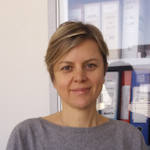 Diploma of maturity achieved in 1993 at Technical-Commercial Institute Paolo Sarpi of Venice.
Diploma of maturity achieved in 1993 at Technical-Commercial Institute Paolo Sarpi of Venice.
From February 2002 to October 2005 she worked at Pago Italia Srl in Dosson (TV) dealing mainly with the issue of active and passive invoices and payments. From June 1999 to February 2002 she was employed at Cinquegrani Sas in Quarto d'Altino where she worked on invoicing clients and suppliers, verification of payments and relations with the public. From June 1996 to March 1999 she worked in front office at the dealership VW Audi Pole Position Spa in Mestre, also dealing with billing customers and first known cash. From 2005 to 2010 temporary position at the Institute for the Dynamics of Environmental Processes (IDPA) of the CNR, Administrative Staff-Level VII; since 2010 permanent position at the Institute for the Dynamics of Environmental Processes (IDPA) of the CNR, Administrative Staff-Level VII. In 2019 she moved to the Institute of Polar Sciences (ISP).
In her activity at the CNR, Elisa Tessarin mainly deal with the procedures related to the orders of expense billing registration, management of staff attendance through dedicated computer tools, Organization of medical examinations for suitability for work, procedures for reimbursement of missions (work trips) of staff, computer protocol and is treasurer of the Institute.
Spolaor Andrea
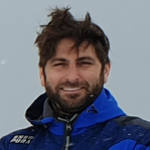 I am interested in paleoclimate and snow chemistry studies including elements and compounds post-depositional and photochemical process in surface snow and snow-atmosphere interactions. My main topic is trace elements measurements in ice cores with particular focusing on iron (includes its chemical speciation) for its role in the ocean fertilization, and halogens measurements for their connections with sea ice changes. I am also interest in the impact caused by the ancient civilization on atmospheric composition. I am involved in aerosol measurements in polar environment for understand the natural cycle of trace elements, biogenic compound and black carbon and their possible changes in the recent decades. I participate in several field expeditions in Arctic, Antarctic and Alpine regions. I am actively involved in glacier mass balance estimations.
I am interested in paleoclimate and snow chemistry studies including elements and compounds post-depositional and photochemical process in surface snow and snow-atmosphere interactions. My main topic is trace elements measurements in ice cores with particular focusing on iron (includes its chemical speciation) for its role in the ocean fertilization, and halogens measurements for their connections with sea ice changes. I am also interest in the impact caused by the ancient civilization on atmospheric composition. I am involved in aerosol measurements in polar environment for understand the natural cycle of trace elements, biogenic compound and black carbon and their possible changes in the recent decades. I participate in several field expeditions in Arctic, Antarctic and Alpine regions. I am actively involved in glacier mass balance estimations.
Scopus - Author ID: 54962645400 ![]() http://orcid.org/0000-0001-8635-9193 ResearchGate Google Scholar
http://orcid.org/0000-0001-8635-9193 ResearchGate Google Scholar
Keynote talks on Nutrient Cycle in the Arctic 21–22 October 2020 Online
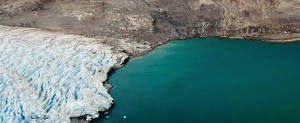 Online keynote talks on the Nutrient Cycle in the Arctic linked to environmental change. The keynote talks are an appetizer for an open workshop on the same topic taking place in spring 2021 in Orvieto, Italy.
Online keynote talks on the Nutrient Cycle in the Arctic linked to environmental change. The keynote talks are an appetizer for an open workshop on the same topic taking place in spring 2021 in Orvieto, Italy.
More information including info about confirmed speakers
Registration form
Sartorato Ivan
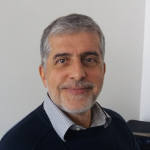 CNR scientist at the Institute of Polar Sciences, headquarters of Venice-Mestre.
CNR scientist at the Institute of Polar Sciences, headquarters of Venice-Mestre.
From 1996 to 2018 at the Center for Biology and Control of Weeds, since 2002 Institute of Agro-Environmental and Forest Biology (IBAF) and since September 2018 Institute of Research on Terrestrial Ecosystems (IRET) of Legnaro, Padua.
Graduated in Agricultural Sciences in 1992.
CNR macro areas of reference: Earth and Environment, Agri-food
Research interests
• Ecophysiology of weeds
• Modeling of the competition between weeds and crops and of light interception within canopies
• Environmental fate of herbicides Summary of activities and assignments:
From 2008 to 2016 responsible for the IBAF URT: Mountain ecosystems for the mitigation of environmental changes in the alpine area at the Alpine Studies Center of the University of Tuscia in Cinte Tesino (TN).
Member of the Management Committee of the COST Action E 47 (2005-2009): "European Network for Forest Vegetation Management: Towards Environmental Sustainability" del domain: Forests, their Products and Services.
Referee for the journals: Applied Ecology, Weed Research, Int. J. of Biodiversity and Conservation, Spanish Journal of Agricultural Research, Journal of Testing and Evaluation.
Experiences abroad:
In 1995 and 1997 he spent two periods abroad at the WUR (Wageningen University and Research, the Netherlands) for a total of 6 months.
In 2002 he was visiting scientist for about 4 months at the Department of Botany and Plant Sciences, University of California, Riverside, CA, USA.
In 2008 he was visiting scientist for two months at the Plant and Invertebrate Ecology Department, Rothamsted Research, UK.
Scopus - Author ID: 6507412824
Gregoris Elena
 She mainly deals with the development of analytical methods for the determination of legacy and emerging organic pollutants, in various environmental matrices. Among the areas of interest are the air quality, the analysis of pollutants in gas chromatography-mass spectrometry, the determination of microplastics, the application of statistical techniques for the evaluation of pollution sources. She has worked on several European projects, managed collaborations for research activities also with private companies, has been a correlator of various theses. She studied in Venice, where she obtained a bachelor’s degree in chemistry in 2005 and a master’s degree in chemistry and environmental Compatibility in 2007, both with full grades. In 2011 she obtained the double degree of Doctor of Philosophy in Chemical Sciences at the Ca' Foscari University of Venice and of Biological Sciences, at the Universidade Estadual Paulista of Botucatu (San Paolo - Brasile). During her doctorate, she focused mainly on antioxidant power analysis in foods, including fruit and propolis. Between 2009 and 2010 she spent a period of 6 months at the Institute of Biosciences of the University of São Paulo, working mainly on fruits originating from the tropical zone of Brazil and poorly studied until then. From 2012 to 2017 she was a research fellow at the Institute for the Dynamics of Environmental Processes (IDPA-CNR), in 2017-2018 a research technologist of the ECOMOBILITY project at the University of Ca' Foscari Venice and from July 2019 a researcher of the III level at CNR-ISP.
She mainly deals with the development of analytical methods for the determination of legacy and emerging organic pollutants, in various environmental matrices. Among the areas of interest are the air quality, the analysis of pollutants in gas chromatography-mass spectrometry, the determination of microplastics, the application of statistical techniques for the evaluation of pollution sources. She has worked on several European projects, managed collaborations for research activities also with private companies, has been a correlator of various theses. She studied in Venice, where she obtained a bachelor’s degree in chemistry in 2005 and a master’s degree in chemistry and environmental Compatibility in 2007, both with full grades. In 2011 she obtained the double degree of Doctor of Philosophy in Chemical Sciences at the Ca' Foscari University of Venice and of Biological Sciences, at the Universidade Estadual Paulista of Botucatu (San Paolo - Brasile). During her doctorate, she focused mainly on antioxidant power analysis in foods, including fruit and propolis. Between 2009 and 2010 she spent a period of 6 months at the Institute of Biosciences of the University of São Paulo, working mainly on fruits originating from the tropical zone of Brazil and poorly studied until then. From 2012 to 2017 she was a research fellow at the Institute for the Dynamics of Environmental Processes (IDPA-CNR), in 2017-2018 a research technologist of the ECOMOBILITY project at the University of Ca' Foscari Venice and from July 2019 a researcher of the III level at CNR-ISP.
Scopus - Author ID: 26649910100 ResearchGate Google Scholar
Gabrieli Jacopo
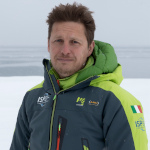 I studied chemistry at the University of Padua and obtained a doctorate in Environmental Sciences from the universities of Venice and Grenoble. Researcher at the Institute of Polar Sciences of the CNR, for years I’ve been involved in the study of climatic archives in ice cores with the implementation of innovative analytical techniques. Mountaineer for work but above all for passion, I’ve participated in important research projects not only on Alpine glaciers, but also in Greenland, Antarctica and Svalbard Islands.
I studied chemistry at the University of Padua and obtained a doctorate in Environmental Sciences from the universities of Venice and Grenoble. Researcher at the Institute of Polar Sciences of the CNR, for years I’ve been involved in the study of climatic archives in ice cores with the implementation of innovative analytical techniques. Mountaineer for work but above all for passion, I’ve participated in important research projects not only on Alpine glaciers, but also in Greenland, Antarctica and Svalbard Islands.
Scopus - Author ID: 36007295400 ResearchGate
De Biasio Francesco
 Graduated in Physics in 1993, he is currently researcher at the National Research Council, Institute of Polar Sciences (CNR-ISP). He has over 20 years of experience in the field of marine meteorology at the micro- and meso-scale, through the use of remote sensing with active microwave instruments in the marine environment, on satellite and on observation platforms during campaigns at sea (Adriatic Sea: Acqua Alta tower, platforms ENI; Kikeneiz research platform on the Black Sea).
Graduated in Physics in 1993, he is currently researcher at the National Research Council, Institute of Polar Sciences (CNR-ISP). He has over 20 years of experience in the field of marine meteorology at the micro- and meso-scale, through the use of remote sensing with active microwave instruments in the marine environment, on satellite and on observation platforms during campaigns at sea (Adriatic Sea: Acqua Alta tower, platforms ENI; Kikeneiz research platform on the Black Sea).
He deals with analyzing historical series of meteorological-marine data acquired both through in situ and remote sensing data. He is co-author of some works on wind characterization at the air-sea interface through the analysis of SAR images with the continuous wavelets technique. He participated in the MIUR RITMARE project dealing with the acquisition and interpretation of remote sensing scatterometric data for the determination of the wind at the sea surface.
He participated in the ESA eSurge-Venice project on the expansion of the possibility of using satellite data to predict storm surges. Recently he has carried out research in the ESA Sea Level Climate Change Initiative (SL_CCI), in carrying out the ESA SL_CCI Bridging Phase project, dealing with applications of satellite altimetry.
He participates in the ESA Radar Altimetry for the Coastal Zone and Inland Waters project, which involves the development of specific applications of SAR satellite altimetry in coastal areas and inland waters.
He has been the scientific manager of three research projects funded by the Tide Forecasting and Reporting Center (Municipality of Venice). His main scientific interests include microwave remote sensing of the marine environment and the interpretation of synthetic aperture radar images; continuous wavelet transformation techniques; time series analysis of wind, sea level and backscatter radar; storm surge forecasts; complementarity of atmospheric modeling and satellite remote sensing. He is the author/co-author of more than 30 indexed products (source Scopus) as articles published in international journals or as acts of international conferences. Its scientific production can be quantified by a number of citations equal to 242 and an h-index equal to 9 (source Scopus).
Scopus - Author ID: 6603102453 ![]() http://orcid.org/0000-0002-6250-9588
http://orcid.org/0000-0002-6250-9588
Cozzi Giulio
 Research interests
Research interests
Development of mass spectrometry-based advanced analytical methodology for trace and ultra-trace determinations in environmental, biological and agrifood matrices; long-term paleoclimate and atmospheric chemistry from ice cores; heavy metals in polar and temperate ice and snow.
Scopus - Author ID: 35495278300 ![]() http://orcid.org/0000-0001-8796-4176 ResearchGate Google Scholar
http://orcid.org/0000-0001-8796-4176 ResearchGate Google Scholar
Corami Fabiana
 Researcher; her main fields of research are quantification and identification of small microplastics (1-100 µm) in different environmental matrices (permafrost, biota, sediments, etc.) via MicroFTIR, quantification and identification of microplastic fibers via MicroFTIR, speciation of trace elements in Antarctic waters, geospeciation of trace elements and REEs in sediments and soils, bioaccumulation of trace elements and REEs in feathers, microscopical techniques and ancillary analyses. Author of several peer-reviewed articles, she has participated to national and international congresses and is reviewer for journals such as STOTEN (Science of the Total Environment) Estaurine Coastal and Shelf Science, International Journal of Environmental Pollution and Remediation, Scientific Reports Nature. She is member of the Scientific Committee of ICEPR – International Conference on Environmental Pollution and Remediation. She is member of the Institute Committee (CdI) and she is also CNR representative on the Executive Board of District of Venice Research and Innovation (DVRI) and is member of the Leonardos group for Science Gallery Venice.
Researcher; her main fields of research are quantification and identification of small microplastics (1-100 µm) in different environmental matrices (permafrost, biota, sediments, etc.) via MicroFTIR, quantification and identification of microplastic fibers via MicroFTIR, speciation of trace elements in Antarctic waters, geospeciation of trace elements and REEs in sediments and soils, bioaccumulation of trace elements and REEs in feathers, microscopical techniques and ancillary analyses. Author of several peer-reviewed articles, she has participated to national and international congresses and is reviewer for journals such as STOTEN (Science of the Total Environment) Estaurine Coastal and Shelf Science, International Journal of Environmental Pollution and Remediation, Scientific Reports Nature. She is member of the Scientific Committee of ICEPR – International Conference on Environmental Pollution and Remediation. She is member of the Institute Committee (CdI) and she is also CNR representative on the Executive Board of District of Venice Research and Innovation (DVRI) and is member of the Leonardos group for Science Gallery Venice.
Scopus - Author ID: 7801412352 ![]() http://orcid.org/0000-0002-7484-9600 ResearchGate Google Scholar
http://orcid.org/0000-0002-7484-9600 ResearchGate Google Scholar
Cester Valentina
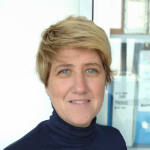 Diploma of technical-tourist maturity. 1992-1998: research support activities at the Ca' Foscari University, Department of Environmental Sciences, with freelance work contracts. 1998-2011: permanent position, as technician, at the Ca' Foscari University, Department of Environmental Sciences.
Diploma of technical-tourist maturity. 1992-1998: research support activities at the Ca' Foscari University, Department of Environmental Sciences, with freelance work contracts. 1998-2011: permanent position, as technician, at the Ca' Foscari University, Department of Environmental Sciences.
She was assigned, by convention, to the Institute for the Dynamics of Environmental Processes of the CNR (IDPA), formerly Centre of Study on Chemistry and Technologies for the Environment. From 1 November 2011 employee CNR (following mobility between entities) at the Institute for the Dynamics of Environmental Processes (IDPA), profile C.T.E.R. - VI level. From 2004 to 2019 she assumed the role of Administrative Secretary of IDPA. In June 2019 she moved to the Institute of Polar Sciences (ISP) where she serves as Administrative Secretary.
In the first years of activity Valentina Cester has taken care of the logistic part of the expeditions in Antarctica relatively to the activities of the researchers of IDPA and of the group of Environmental Analytical Chemistry of the University Ca' Foscari. She has also played an active part in the organization of the National Conferences of the Environmental Contamination-PNRA Sector.
Cairns Warren Raymond Lee
 I'm an analytical chemist specialised in trace elemental analysis, and trace element speciation studies. My goals include determining the role, fate and toxic effects of heavy metals in the environment and their impact on humanity. Recently I have been concentrating on mercury, it's atmospheric concentrations and presence in snow, ice and ground water, with particular emphasis on deposition phenomena. I have participated in 2 Antarctic Expeditions to Concordia Station and am the Italian National Expert on the POPs and Mercury Expert Groups of AMAP, the Arctic Monitoring and Assessment Program as well as on the Arctic Contaminants Action Program (ACAP).
I'm an analytical chemist specialised in trace elemental analysis, and trace element speciation studies. My goals include determining the role, fate and toxic effects of heavy metals in the environment and their impact on humanity. Recently I have been concentrating on mercury, it's atmospheric concentrations and presence in snow, ice and ground water, with particular emphasis on deposition phenomena. I have participated in 2 Antarctic Expeditions to Concordia Station and am the Italian National Expert on the POPs and Mercury Expert Groups of AMAP, the Arctic Monitoring and Assessment Program as well as on the Arctic Contaminants Action Program (ACAP).
I have co-authored over 64 publications and I am a writer for the Atomic Spectrometry Updates Environmental Analysis review of the Royal Society of Chemistry. I obtained my degree in Environmental Chemistry from the University of East Anglia, followed by an M.Sc in Analytical Chemistry, I obtained my Ph.D from the University of Plymouth in 1996.
Scopus - Author ID: 7003572964 Research Gate: Warren Cairns
Becherini Francesca
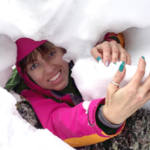 She took her degree in Physics at the University of Padua in 1999 and her PhD in Science for Conservation of Cultural Heritage at the University of Florence in 2007.
She took her degree in Physics at the University of Padua in 1999 and her PhD in Science for Conservation of Cultural Heritage at the University of Florence in 2007.
She joined the National Research Council of Italy in 2002 where she won a permanent position as a researcher in 2011. From 2002 to 2019 she worked at the Institute of Atmospheric Science and Climate (ISAC), Padua, then she moved to the Institute of Polar Sciences (ISP), Venice, where she is currently researcher.
Her research interests are in the fields of Atmospheric physics, Climatology and Microclimatology, Environmental Sciences.
At ISAC, she started working in microclimatology applied to the preventive conservation of cultural heritage assets, indoor environmental quality and energy saving, developing a large experience in multidisciplinary research projects. Then her research activity was more and more focused on climatology. Currently, her interest is on one side in climatic change research through the recovery, correction and analysis of proxy and instrumental series of climatic data; on the other in the study of atmospheric physical parameters and processes to investigate the energy balance and the polar climatic system. She was member of the coordination team of many FP5, FP7and H2020 European projects, and investigator in international and national projects. She was contract professor for masters and specialized course, tutor of PhD, BSc and MSc thesis.
Scopus - Author ID: 55370745600 ![]() http://orcid.org/0000-0002-8408-0102 WoS Researcher ID: AAD-8969-2020 Research Gate: Francesca Becherini
http://orcid.org/0000-0002-8408-0102 WoS Researcher ID: AAD-8969-2020 Research Gate: Francesca Becherini
SIOS PolarNightWeek 11-15 January 2021 - ONLINE
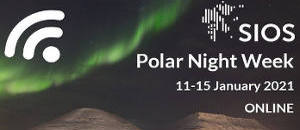 The third #PolarNightWeek for and with the #SIOS community will be held online, 11-15 January 2021.
The third #PolarNightWeek for and with the #SIOS community will be held online, 11-15 January 2021.
Arctic Frontiers 2021
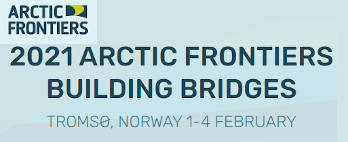 Arctic Frontiers Science 2021 will take place on 1-4 February 2021
Arctic Frontiers Science 2021 will take place on 1-4 February 2021
Arctic Frontiers 2021 goes digital!
Special Issue: Plastics in polar regions
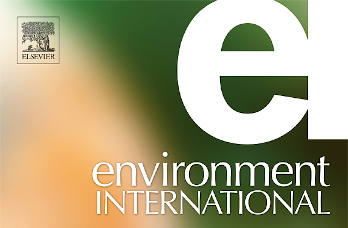 Pubblicato sul sito web della rivista internazionale Environment International lo Special Issue Plastics in polar regions.
Pubblicato sul sito web della rivista internazionale Environment International lo Special Issue Plastics in polar regions.
Guest Editor: Ilaria Corsi, Elisa Bergami, Gabriella Caruso (CNR-ISP), Simone Cappello
Special issue: Polar Marine Carbonates (deadline 21 August 2021)
 A special issue of Minerals (ISSN 2075-163X). This special issue belongs to the section Environmental Mineralogy and Biogeochemistry
A special issue of Minerals (ISSN 2075-163X). This special issue belongs to the section Environmental Mineralogy and Biogeochemistry
This Special Issue welcomes contributions on all compositional (chemical, physical, biological) aspects of polar and subpolar carbonates in the marine domain, recent and past.
Deadline for manuscript submissions: 21 August 2021
Special Issue Editors: Paolo Montagna (CNR-ISP) and Marco Taviani (CNR-ISMAR)
Artico - Microplastiche in un crostaceo
Sono state osservate microplastiche negli oceani, nelle acque dolci, nei suoli, nei sedimenti, nelle acque potabili, e anche nelle aree polari. Nel lavoro pubblicato su Environmental Research, i ricercatori dell’Enea, dell’Università La Sapienza e dell’Istituto di Scienze Polari (CNR-ISP) hanno osservato la presenza di microplastiche ingerite da Gammarus setosus (Amphipoda), un crostaceo diffuso nelle Isole Svalbard e in altre aree dell’Artico.
Le microplastiche ingerite dal G. setosus sono state studiate con tecniche specifiche di colorazione e tramite spettroscopia infrarossa (Micro-FTIR). Le particelle di plastica ritrovate all’interno degli organismi analizzati avevano dimensioni comprese tra i 3 e i 370 µm (milionesimi di metro).
Artico - Microplastiche in un crostaceo
27 Luglio 2020
L’inquinamento delle microplastiche è diffuso a livello globale tanto quanto lo è l’utilizzo delle materie plastiche. Le caratteristiche dei polimeri plastici che ne hanno decretato il successo (ad esempio la malleabilità, la durata, la resistenza alla corrosione, la versatilità nell’impiego, ecc.) sono le stesse che ne determinano la pericolosità a livello ambientale. Infatti, l’ubiquità e la persistenza delle materie plastiche rappresentano un pericolo per l’ambiente e per gli organismi. Si parla di plastic debris sin dagli anni ’70, ma il termine microplastiche entra nel lessico comune solo nel 2004, grazie al Professor Richard Thompson. Nel gennaio 2019 L’Agenzia Europea per le Sostanze Chimiche (European Chemical Agency, ECHA) ha dato una definizione precisa delle microplastiche e ne ha definito il range dimensionale. Le microplastiche possono essere particelle, ma anche fibre, poiché molti tessuti sintetici, come il nylon o il poliestere, sono dei polimeri plastici.
Artico - Ondata di calore alle Isole Svalbard
26 Luglio 2020
Le misure della Amundsen-Nobile Climate Change Tower (CCT) del CNR confermano l'ondata di calore che ha investito le Isole Svalbard e che ha avuto il suo picco nella giornata di sabato 25 luglio.
La temperatura misurata alla CCT ha superato i 18 °C, battendo il precedente record registrato dalla nostra torre pari a 16.9 °C, del 6 luglio 2019.
Curiosamente, questo è stato anche l'anno in cui abbiamo misurato la temperatura più bassa: -31.4 °C (11 marzo 2020).
(Mauro Mazzola CNR-ISP)
I dati in tempo reale dalla CCT
Alghe rosse sul ghiacciaio del Presena
Il fenomeno delle alghe rosse sulla neve è noto da tempo. Alghe nivali come la Chlamydomonas nivalis colorano di rosso la neve durante la primavera e l'estate sia alle medie latitudini che ai poli. Esiste relativamente poca letteratura scientifica riguardo questo fenomeno, il quale ha il diretto effetto di accelerare la fusione delle neve e del ghiaccio.
Quest'anno, la colorazione rossa è stata "avvistata" in varie zone delle Alpi Europee. In particolare, la neve al ghiacciaio del Presena (Trentino-AltoAdige) ha assunto una decisa colorazione rossa che ha destato l'attenzione degli escursionisti e degli operatori degli impianti di risalita. La presenza di queste alghe sulla neve provoca una diminuzione di albedo (o riflettività) della neve stessa, e induce un maggiore assorbimento di radiazione ed una fusione accelerata. (Continua .....)
Alghe rosse sul ghiacciaio del Presena
Il fenomeno delle alghe rosse sulla neve è noto da tempo. Alghe nivali come la Chlamydomonas nivalis colorano di rosso la neve durante la primavera e l'estate sia alle medie latitudini che ai poli. Esiste relativamente poca letteratura scientifica riguardo questo fenomeno, il quale ha il diretto effetto di accelerare la fusione delle neve e del ghiaccio.
Quest'anno, la colorazione rossa è stata "avvistata" in varie zone delle Alpi Europee. In particolare, la neve al ghiacciaio del Presena (Trentino-AltoAdige) ha assunto una decisa colorazione rossa che ha destato l'attenzione degli escursionisti e degli operatori degli impianti di risalita. La presenza di queste alghe sulla neve provoca una diminuzione di albedo (o riflettività) della neve stessa, e induce un maggiore assorbimento di radiazione ed una fusione accelerata. Il fenomeno è stato di recente studiato sia in Artico che in Antartide, e rappresenta una fonte di incertezza nei modelli di dinamica glaciale e nivale. In futuro, questo fenomeno potrebbe rivelarsi più intenso a causa dei cambiamenti climatici. Infatti, scarse precipitazioni nevose durante l’inverno e alte temperature priverili/estive creano il perfetto ambiente per lo sviluppo di queste alghe.
Fragranze e idrocarburi policiclici aromatici trovati sul monte Elbrus in Caucaso
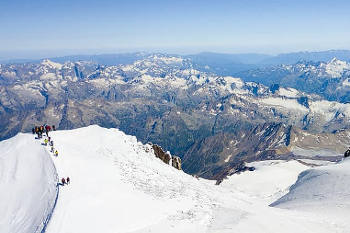 6 Luglio 2020
6 Luglio 2020
In un lavoro pubblicato su Scientific Reports, i ricercatori dell’Istituto di scienze polari del Consiglio nazionale delle ricerche (CNR-ISP) assieme ai colleghi dell’Università Ca’ Foscari Venezia, dello U.S. Geological Survey di Denver, dell’Università di Grenoble e dell’Istituto di geografia dell’Accademia russa di scienze hanno analizzato il contenuto di una carota prelevata sul ghiacciaio del monte Elbrus in Caucaso in idrocarburi policiclici aromatici (PAHs) - traccianti classici della contaminazione umana derivanti principalmente dalla combustione - e in fragranze utilizzate quotidianamente per la cura della persona - i cosiddetti inquinanti emergenti - ricavando i corrispondenti profili di concentrazione dagli anni ’30 del 1900 fino al 2005.
Comunicato stampa CNR
EOS - AGU : Fragrances in an Ice Core Tell a Story of Human Activity
Artico: Campagna High North 2020
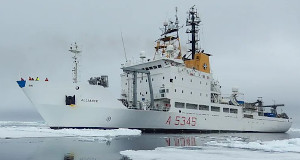 24 Giugno 2020
24 Giugno 2020
La Campagna oceanografica "High North" 2020 è organizzata dalla Marina Militare e dall'Istituto idrografico della marina con destinazione Artico. (22 Giugno - 28 Luglio 2020)
Il CNR concorre alla campagna tramite l'Istituto di Scienze Polari (ISP) e l'Istituto di Scienze Marine (ISMAR).
Comunicato stampa CNR sull'inizio della campagna
Comunicato della Marina Militare sulla chiusura della campagna
La nave Alliance (credits: Marina Militare)
Deep-Sea corals discovered in Australian submarine canyons facing the Southern Ocean
The waters offshore southwestern Australia, in particular the Bremer Marine Park, are already known as a biodiversity hotspot of marine species such as whales and dolphins, however, a recent expedition on board the R/V Falkor has now revealed rich and diverse ecosystems inhabiting the cold deep waters within the canyon. Led by researchers from the University of Western Australia (UWA) and the Institute of Polar Sciences (CNR-ISP) in Italy, these discoveries were only made possible by the philanthropic Schmidt Ocean Institute’s (SOI) deep-sea remotely operated vehicle, SuBastian, which is capable of sampling depths to 4,500 meters.
ClimRisk2020: Time for Action! - 21-23 October 2020
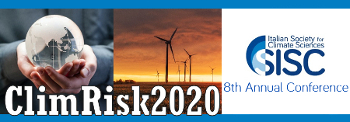 Conferenza annuale 2020
Conferenza annuale 2020
Il convegno, organizzato on-line, avrà una sessione specifica dedicata a:
Glaciers, ice sheets, sea–ice: climate of the past and future tipping points
SESS report 2020
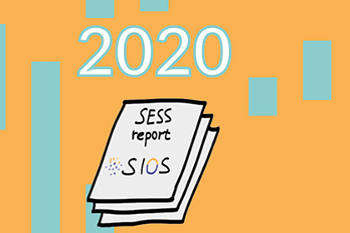 The call for contributions to the 2nd SESS report is open
The call for contributions to the 2nd SESS report is open
Deadline: 15 April 2020
SESS Report 2020 Web page
Training course on terrestrial remote sensing in Svalbard: now open also for non-members
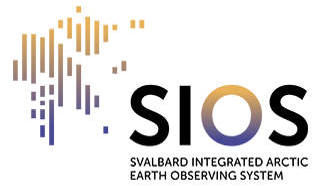 This autumn, SIOS will offer a training course on how to effectively use remote sensing data acquired from satellites, from the air or from the ground, and their associated tools and software in the context of terrestrial research in Svalbard. The course is intended for field scientists, Ph.D. students and technicians with no or little experience with remote sensing techniques. The training will be delivered by remote sensing experts from SIOS member institutions, international teachers and potential virtual talks from ESA experts.
This autumn, SIOS will offer a training course on how to effectively use remote sensing data acquired from satellites, from the air or from the ground, and their associated tools and software in the context of terrestrial research in Svalbard. The course is intended for field scientists, Ph.D. students and technicians with no or little experience with remote sensing techniques. The training will be delivered by remote sensing experts from SIOS member institutions, international teachers and potential virtual talks from ESA experts.
Application deadline: 7 June 2020
SIOS Web page
Ph.D in Science and Management of Climate Change
 The PhD programme in Science and Management of Climate Change is a joint initiative between Ca’ Foscari University of Venice and the Euro-Mediterranean Center on Climate Change (CMCC)
The PhD programme in Science and Management of Climate Change is a joint initiative between Ca’ Foscari University of Venice and the Euro-Mediterranean Center on Climate Change (CMCC)
The programme is taught entirely in English. Duration: 4 years
Details
Dottorato in Scienze e tecnologie ambientali, geologiche e polari
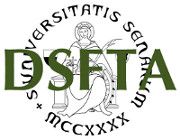 Il Dottorato ha sede presso le strutture del Dipartimento di Scienze Fisiche, della Terra e dell’Ambiente dell’Università degli Studi di Siena. Il Dottorato in Scienze e tecnologie ambientali, geologiche e polari ha una forte connotazione inter- e multidisciplinare (settori scientifico disciplinari delle aree CUN 03, 04, 05 e 07) e si propone di fornire una formazione post-laurea di alto livello nelle ricerche, sia di base che applicate, rivolte allo studio del funzionamento e delle interazioni tra i diversi comparti della Terra, le quali trovano una sintesi nella cosiddetta Earth System Science.
Il Dottorato ha sede presso le strutture del Dipartimento di Scienze Fisiche, della Terra e dell’Ambiente dell’Università degli Studi di Siena. Il Dottorato in Scienze e tecnologie ambientali, geologiche e polari ha una forte connotazione inter- e multidisciplinare (settori scientifico disciplinari delle aree CUN 03, 04, 05 e 07) e si propone di fornire una formazione post-laurea di alto livello nelle ricerche, sia di base che applicate, rivolte allo studio del funzionamento e delle interazioni tra i diversi comparti della Terra, le quali trovano una sintesi nella cosiddetta Earth System Science.
Pagina dettagli - Dottorato in Scienze e tecnologie ambientali, geologiche e polari
MASTER Universitario in Sviluppo Sostenibile, Geopolitica delle Risorse e Studi Artici
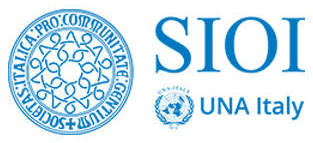 La Società Italiana per l'Organizzazione Internazionale (SIOI) e Unitelma Sapienza, d’intesa con il Ministero degli Affari Esteri e della Cooperazione Internazionale ed il CNR, organizzano il Master in Sviluppo Sostenibile, Geopolitica delle risorse e Studi Artici. L'obiettivo del Master è di sviluppare capacità e competenze nei settori della green economy, della geopolitica dell'energia e delle risorse con particolare attenzione all'eco-sostenibilità e all'utilizzo responsabile del territorio. Un focus approfondito sarà dedicato all'importanza geostrategica ed economica delle Regioni artiche.
La Società Italiana per l'Organizzazione Internazionale (SIOI) e Unitelma Sapienza, d’intesa con il Ministero degli Affari Esteri e della Cooperazione Internazionale ed il CNR, organizzano il Master in Sviluppo Sostenibile, Geopolitica delle risorse e Studi Artici. L'obiettivo del Master è di sviluppare capacità e competenze nei settori della green economy, della geopolitica dell'energia e delle risorse con particolare attenzione all'eco-sostenibilità e all'utilizzo responsabile del territorio. Un focus approfondito sarà dedicato all'importanza geostrategica ed economica delle Regioni artiche.
Ocean Space Nowtilus - L'Ecosistema lagunare
 L'Ecosistema lagunare con Luigi Cavaleri, oceanografo all’ISMAR-CNR, Fabiana Corami, biologa, Istituto di Scienze Polari del CNR (CNR-ISP); e Beatrice Rosso, ricercatrice, Dipartimento di Scienze Ambientali, Informatica e Statistica dell’Università Ca’ Foscari.
L'Ecosistema lagunare con Luigi Cavaleri, oceanografo all’ISMAR-CNR, Fabiana Corami, biologa, Istituto di Scienze Polari del CNR (CNR-ISP); e Beatrice Rosso, ricercatrice, Dipartimento di Scienze Ambientali, Informatica e Statistica dell’Università Ca’ Foscari.
Podcast disponibile a partire da venerdì 5 giugno, ore 16.00.
Agenda della manifestazione
WEBINAR on the European Polar Research Programme - 11 June 2020
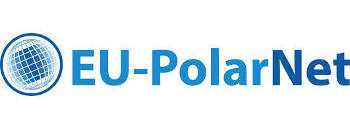 Conferences and workshops
Conferences and workshops
Webinar on the European Polar Research Programme
11th June 2020 - Time: 10:00 - 13:00 CEST
Place: online. Please register here
Osservazione, rimozione manuale e riconoscimento dello zooplancton catturato in colonna d’acqua mediante trappole di sedimento
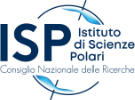 Dove: CNR-ISP Sede di Bologna
Dove: CNR-ISP Sede di Bologna
Tipologia: Tirocinio curricolare
Titolo: Osservazione, rimozione manuale e riconoscimento dello zooplancton catturato in colonna d’acqua mediante trappole di sedimento
Tutor/Docente di riferimento: Dr. Patrizia Giordano, tel. 051 6398902, e-mail: patrizia.giordano AT cnr.it
Tecniche di laboratorio per il trattamento e analisi di campioni di trappole di sedimento per la stima dei flussi verticali di materiale particellato e di sostanza organica nella colonna d’acqua
 Dove: CNR-ISP Sede di Bologna
Dove: CNR-ISP Sede di Bologna
Tipologia: Tirocinio curricolare
Titolo: Tecniche di laboratorio per il trattamento e analisi di campioni di trappole di sedimento per la stima dei flussi verticali di materiale particellato e di sostanza organica nella colonna d’acqua
Tutor/Docente di riferimento: Dr. Patrizia Giordano, tel. 051 6398902, e-mail: patrizia.giordano AT cnr.it
Long-term variability of zooplankton communities in an Artic fjord (Kongsfjorden, Svalbard) in relation of climate variability (2010-2020)
 Dove: CNR-ISP Sede di Bologna
Dove: CNR-ISP Sede di Bologna
Tipologia: Tesi di Laurea
Titolo: Long-term variability of zooplankton communities in an Artic fjord (Kongsfjorden, Svalbard) in relation of climate variability (2010-2020)
Tutor/Docente di riferimento: Dr. Patrizia Giordano, tel. 051 6398902, e-mail: patrizia.giordano AT cnr.it
Variabilità dei flussi di materiale particellato nel mare Adriatico Meridionale
 Dove: CNR-ISP Sede di Bologna
Dove: CNR-ISP Sede di Bologna
Tipologia: Tirocinio, Tesi di Laurea
Titolo: Variabilità dei flussi di materiale particellato nel mare Adriatico Meridionale
Tutor/Docente di riferimento: Dr. Stefano Miserocchi, tel. 051 639880, e-mail: stefano.miserocchi AT cnr.it
Stime del forcing radiativo delle nubi nel plateau antartico e in artico
 Dove: CNR-ISP Sede di Bologna
Dove: CNR-ISP Sede di Bologna
Tipologia: Tesi di Laurea
Titolo: Stime del forcing radiativo delle nubi nel plateau antartico e in artico
Tutor/Docente di riferimento: Dr. Angelo Lupi, tel. 051 6399588, email: angelo.lupi AT cnr.it
Impact of the COVID19 outbreak on Italian Polar activities
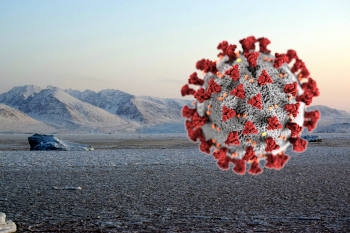
5 Maggio 2020
Arctic
Svalbard: Based on the national policy adopted in consequences of COVID19 pandemic and the restrictions imposed by Norwegian government and the Governor of Svalbard, CNR cancelled all the upcoming field activities at Dirigibile Italia Arctic station until the end of May. Assuming that these restrictions will continue, further cancellations are expected. At the moment, CNR has only one technician there managing the routine operations. Starting from June, some monitoring activities will be supported by the Norwegian Polar Institute staff. (read more)
Svalbard Strategic Grant (SSG)
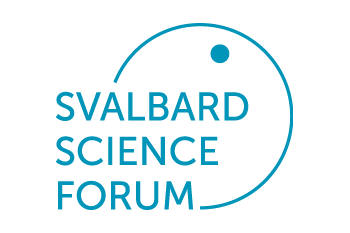 The Svalbard Strategic Grant is a seed money program aimed at advancing coordination, collaboration and data sharing between researchers with a relevance to Svalbard.
The Svalbard Strategic Grant is a seed money program aimed at advancing coordination, collaboration and data sharing between researchers with a relevance to Svalbard.
The program is financed by the Research Council of Norway (RCN) and administered by the Svalbard Science Forum (SSF) secretariat in Longyearbyen.
A call for proposals is made annually. The application deadline is the 16 December 2019.
The full call text is available here.
Distribuzione e caratterizzazione di small microplastics (inferiore a 100 um) nel permafrost: le Isole Svalbard come caso di studio
 Dove: CNR-ISP Sede Venezia-Mestre
Dove: CNR-ISP Sede Venezia-Mestre
Tipologia: Tirocinio, Tesi di Laurea
Titolo: Distribuzione e caratterizzazione di small microplastics (<100 µm) nel permafrost: le Isole Svalbard come caso di studio
Tutor/Docente di riferimento: Dr. Fabiana Corami, tel. 041 2348658, e-mail: fabiana.corami AT cnr.it
Special Issue: Advances in Water Quality Monitoring and Assessment in Marine and Coastal Regions (deadline 31 December 2021)

A special issue of Water (ISSN 2073-4441). This special issue belongs to the section "Oceans and Coastal Zones".
This Special Issue aims at the promotion of a multidisciplinary approach to evaluate the quality of aquatic ecosystems, with a particular focus on the transitional environments where marine and terrestrial habitats interlink. Research/review papers jointly dealing with coastal oceanography, hydrogeology, biogeochemistry and marine ecology are of interest, although studies on surface waters (rivers, lakes, etc.) in coastal regions are also welcomed.
Deadline for manuscript submissions: 31 March 2021
Special Issue Editors: Alessandro Bergamasco (CNR-ISMAR), Hong Quan Nguyen (WACC), Gabriella Caruso (CNR-ISP), Qianguo Xing (YIC), Eleonora Carol (CONICET)
Special Issue: Distribution and Metabolic Activities of Marine Microbial Communities in Response to Natural and Anthropogenic Forcings (deadline 30 June 2020)

A special issue of Journal of Marine Science and Engineering (ISSN 2077-1312). This special issue belongs to the section "Marine Biology".
Deadline for manuscript submissions: 30 June 2020
Special Issue Editor: Gabriella Caruso (CNR-ISP)
50esima Giornata Mondiale della Terra - EARTH DAY 2020 - Viaggio dal Polo Sud al Polo Nord della Terra
 De Agostini Scuola, in collaborazione con il CNR, celebra la giornata internazionale della Terra con un viaggio dal Polo Sud al Polo Nord della Terra, alla scoperta della salute del nostro pianeta.
De Agostini Scuola, in collaborazione con il CNR, celebra la giornata internazionale della Terra con un viaggio dal Polo Sud al Polo Nord della Terra, alla scoperta della salute del nostro pianeta.
22 Aprile 2020, 11:00
Con: Luca Perri, Marco Casula (CNR-ISP), il team CNR in Antartide, Angelo Viola (CNR-ISP) e Serena Giacomin
VIDEO - Earth day 2020: Un viaggio sostenibile dal Polo Sud al Polo Nord
Destinatari:
Docenti e studenti della Scuola secondaria di I Grado e Primo biennio del II Grado
Special Issue: Polar Microbial Ecology: The Role of Microbes in the Functioning of Extremely Cold Ecosystems (deadline 31 July 2020)

A special issue of Microorganisms (ISSN 2076-2607). This special issue belongs to the section "Environmental Microbiology".
This Special Issue invites you to join in by submitting contributions concerning the role of microbes in the functioning of extremely cold ecosystems, by including as main topics correlations between microbial diversity and polar environmental conditions, temporal and spatial changes in polar microbial communities, metagenomics and molecular advances in polar microbial ecology, relationships and symbiotic associations of cold-adapted microbes with their implications, biogeochemical processes in polar habitats, polar bioprospecting, role of polar microbes in restoration of environments, and biotechnological applications of these extremophiles.
Deadline for manuscript submissions: 31 July 2020
Special Issue Editors: Angelina Lo Giudice (CNR-ISP), Carmen Rizzo (UNI-Me), Maurizio Azzaro (CNR-ISP)
Rientrato in Italia Marco Casula (CNR-ISP)
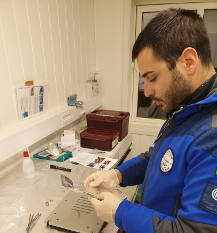 10 Giugno 2020
10 Giugno 2020
Marco Casula, tecnico del CNR-ISP, è rientrato in Italia dalla Stazione di Ricerca in Artico del CNR Dirigibile Italia a Ny-Ålesund, nelle Isole Svalbard.
Il tecnico si trovava presso la Stazione del Cnr dal primo gennaio 2020 con il ruolo di acting station leader ed era rimasto bloccato, causa COVID-19.
ALTRO:
- Intervista dal sito ufficiale del CNR (5 aprile 2020)
- Articolo sul sito "Altre Storie"
- Puntata di GEO AND GEO del 7 aprile 2020
ANTARCTICA 2020 - St. Petersburg, RUSSIA
Due to the unpredictable situation with COVID-19, the conference will be postponed until late spring 2021.
An international conference on polar science and exploration organized by the Arctic and Antarctic Research Institute (AARI) and Roshydromet.
They invite specialists in the following fields to participate in the conference:
- Antarctic geology and solid Earth geophysics
- Geomorphology and paleogeography
- Antarctic atmosphere and Southern Ocean
- Space weather
- Antarctic ice sheet dynamics and mass balance
- Subglacial environments
- Ice drilling and ice core science
- Biodiversity, microbiology and ecology
- Antarctic history and heritage.
#ANTARCTICA2020 Site
Special Issue: Geochemical Characterization of Geothermal Systems: Multidisciplinary Approaches to Define Source Processes, Evolution and Environmental Issues (deadline 15 December 2020)

A special issue of Geosciences (ISSN 2076-3263). This special issue belongs to the section "Geochemistry".
The main scope of this Special Issue is the exploration and evaluation of both innovative and long-validated approaches to the geochemical characterization of geothermal areas.
Deadline for manuscript submissions: 25 July 2022
Special Issue Editors: Giovanni Vespasiano (UNI-Cal), Massimiliano Vardè (CNR-ISP), Carmine Apollaro (UNI-Cal)
Azzaro Maurizio
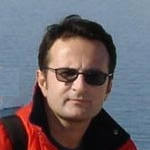 He has obtained two degrees (Biological Sciences; Natural Sciences) and a PhD in Marine Sciences and Engineering.
He has obtained two degrees (Biological Sciences; Natural Sciences) and a PhD in Marine Sciences and Engineering.
His research activities are mainly focused on the study of the functioning of polar ecosystems with an interdisciplinary approach dedicated to various topics ranging from microbial ecology and the study of the microbial food web, to the study of biodiversity and the functioning of marine and terrestrial ecosystems.
During his career he has addressed issues related to the development of new technologies in polar areas (areas marginal to marine glaciers), the effects of pollution (heavy metals, oil, plastics, etc.) and global changes on marine and terrestrial microbial communities. Attention was also paid to the conservation and protection of terrestrial and marine ecosystems with particular reference to the Antarctic Treaty Consultative Meeting (ATCM) and the Commission for the Conservation of Antarctic Marine Living Resources (CCAMLR).
He in thirty years of research has carried out a fervent field activity in a wide spectrum of marine and terrestrial environments: permafrost, sea ice, lakes (temperate and frozen), fjords, transitional areas, coastal areas, pelagic areas (Epi-, meso- and bati-pelago), marginal seas and polar areas. Overall, it has participated in national and international research projects (> 50), in over 60 scientific expeditions in Arctic, Antarctica (in 3 scientific coordinator of the expedition), China, Pacific Ocean, Atlantic Ocean and in the Mediterranean Sea (in 7 as Head of Mission).
During his career he has published more than 100 publications in national and international journals. Since 2019 he is responsible for the section of the Institute of Polar Sciences of Messina.
Scopus - Author ID: 6602752439
Azzaro Filippo
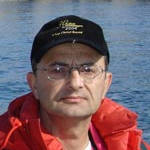 His scientific activity has been devoted to the control of chemico-physical and biological parameters of sea-water, with particular regard to the nutrient evaluation, both by traditional techniques and by means of instruments on line analysis (mobile station, oceanographic buoy) and to the evaluation of trophic parameters (chlorophyll a, ATP).
His scientific activity has been devoted to the control of chemico-physical and biological parameters of sea-water, with particular regard to the nutrient evaluation, both by traditional techniques and by means of instruments on line analysis (mobile station, oceanographic buoy) and to the evaluation of trophic parameters (chlorophyll a, ATP).
From 1990 he is responsible of the laboratory of chemical oceanography. He participated in several oceanographic cruises of national and international programs. Mission chief of several oceanographic cruises in the Mediterranean Sea. From 1989 has participated national program for the research in Antarctica.
He participated in the following Italian scientific expeditions to Antarctica: X Italian-Belgian-U.S. within ROSSMIZE (1994/95), XIX VLT (2003/04), XX ABIOCLEAR (2004/05), XXXI CEFA (2015-2016) e XXXII P.ROSE e CELEBER (2016-2017) programme. He produced about 100 scientific publications.
Scopus - Author ID: 8516485200
Caruso Gabriella
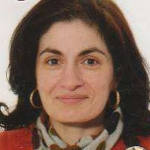 Graduated in Biological Sciences, Specialist in Applied Microbiology, she has been a CNR researcher since 1994.
Graduated in Biological Sciences, Specialist in Applied Microbiology, she has been a CNR researcher since 1994.
Her scientific interests focus on marine microbial ecology and the role of microorganisms in the decomposition processes of organic matter in Mediterranean and polar environments through enzymatic activity measures (aminopeptidase, glucosidase, phosphatase); the search for pathogenic bacteria (Escherichia coli, Vibrio spp.) by means of fluorescent antibody method and enzymatic assays; changes in physiological parameters (digestive enzymes, non-specific immunity) of marine Teleosts in response to stressors. Recent studies in extreme environments have explored the abundance and activity of the free-living heterotrophic bacterial community (UVASS, Svalbard, Arctic Project), present in permafrost or brines (National Antarctic Research Program projects-PNRA 2013/AZ1.05), of microbial biofilms over plastic substrates (PNRA16_00105), acting also as vectors of antibiotic resistance (PNRA 14_00090).
Member of the PhD School for Applied Hygiene - Univ. Messina (2006-2011) and of the Plankton (2000-2001; 2002-2003; 2010-2012; 2013-2015) and Aquaculture Committees (2004-2006; 2016-2018; 2019-2021) of the Italian Society of Marine Biology. Qualified as Full Professor of Ecology (2012-2020). P.I. and member of several research projects (PNRA, EU FP 7 PERSEUS, Marine Strategy, VECTOR, MIUR Cluster-Advanced Monitoring Systems), she has collaborated with the Institute of Hydrobiology-Wuhan (China), Univ. du Sud Toulon-France, CENPAT- Puerto Madryn (Argentina), CERTE-Soliman (Tunisia).
Co-author of over 350 scientific papers, she has a H index 19 (Scopus). Refeee (Publons) and member of Editorial Boards of OA international journals (J. Mar. Sci. Engin.-JMSE, MDPI; J. Coastal Life Medicine, Hainan Univ.; J. Clinical Microbiol. Biochem. Technol.- PEERTECHZ; The Open Fish Sci. J., The Open Mar. Biol. J., BENTHAM; J. Oceanogr. Mar. Res., LONGDOM; J. Ecosyst. Ecogr. OMICS).
Scopus - Author ID: 7102219836 ![]() http://orcid.org/0000-0002-3819-5486 Scholar
http://orcid.org/0000-0002-3819-5486 Scholar
Decembrini Franco
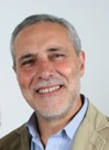 Degree in Biological Sciences (1983), and Ph.D. in Environmental sciences: Marine environment and resources (1989), and CNR researcher in marine ecology (1994).
Degree in Biological Sciences (1983), and Ph.D. in Environmental sciences: Marine environment and resources (1989), and CNR researcher in marine ecology (1994).
The scientific work is summarized in several Technical Reports of oceanographic cruises (as scientific head) and more than 100 publications on national and international journals in the following lines of research:
(i) ecological and physiological role of phytoplankton size-fraction in marine food webs of coastal and off-shore zone in the Mediterranean Sea, Ross Sea (Antarctica) and the Straits of Magellan;
(ii) study of the trophic conditions in the brackish lagoon ecosystems exposed to chemical pollution and eutrophication phenomena (Habs);
(iii) development of automatic monitoring of physico-chemical, optics and biological parameters (phytoplankton) in coastal marine environments through in situ (buoy and ship) and remote sensing (MIVIS, SeaWiFS).
He has participated in several national programs (ROSSMIZE, PRISMA, CLUSTER10, SNOW Artide) and projects of CNR and the Mi.P.A. and international (EU VFP: Strategy; EU FP6: SPICOSA WT 10.3 leader ; INTERACT EU: Sponge).
Scopus - Author ID: 6603331973
Zaccone Renata
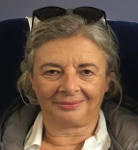 She is Graduated in Biological Sciences and specialized in Applied Microbiology.
She is Graduated in Biological Sciences and specialized in Applied Microbiology.
Since 1982 she has carried out research activity at the CNR, Istituto Sperimentale Talassografico of Messina, now part of the ISP-CNR. Since 2001 she is Senior Researcher.
From the beginning she has been involved in research in the field of microbial ecology. She studies the interactions among environmental factors and marine microbial communities; in particular the effects of climate change on biogeochemical cycles, through the study of the decomposition rates of organic matter (measurements of enzymatic activity such as peptidases, glucosidases and phosphatases).
Other research interests are: -testing the antimicrobial activity of essential oils and new polymers; -evaluation of the health risk in coastal waters (by experimentation of the immunofluorescence technique for the direct count of Escherichia coli, Vibrio spp, Photobacterium). P.I. of National (PRISMA 1, Marine Ecosystems/SINAPSI; MIPAF IV triennial plan N.C16; PON-RSF 2000-2006 N.12745; VECTOR L.4–5.2) and regional projects. Author of over 130 scientific papers published in international and national journals.
Recently she has collaborated on PNRA projects: 2014-2015 PNRA Project: Coastal Ecosystem Functioning in a changing Antarctic ocean (CEFA). P.I. Prof. L. Guglielmo, UO 7, dr. R. La Ferla.
2016-2017 PNRA16 proposal: Biodiversity and functioning of the planktonic ecosystems of the Ross Sea in the changing Southern Ocean (P-ROSE), P.I. dr. O. Mangoni, UO 7, dr. R. La Ferla Microbial biogeochemical rates.
2016-2017 PNRA16: 00207 - A3 - CELEBeR (CDW Effects on glaciaL mElting and on Bulk of Fe in the Western Ross sea (CELEBeR). P.I. dr. P. Rivaro, U.O. dr. Maurizio Azzaro.
2020-2021 PNRA18-0041-B2, Screening of antibiotic-resistance phenomena in bacterial strains isolated from water, sediment and intestine of Antarctic teleosts. P.I. Dr. M. Mancuso.
Scopus - Author ID: 6701823549 ![]() http://orcid.org/0000-0002-0151-9416
http://orcid.org/0000-0002-0151-9416
Filiciotto Francesco
 He participated as scientific coordinator and/or collaborator in the following Research Projects: SOS-BASS-PRIN; ELENO-PONANT within ARICE; VECNA; MARE-ERASMUS+ PLNRDA 2017-2019; MSFD, Dir. 2008/56/EC; SySTeMiC-University of the South Pacific; BYCATCH VII-MIPAAF; CAIMAR JOINT LABORATORY; IRSES-RECOMPRA; Environmental monitoring CNR-AMP Isole Pelagie; “EMSO-MedIT”; BIOforIU; REMOTO-PO FESR; PESCATEC- PON; RITMARE-MIUR; TESEO-PON; CALYPSO- Italy-Malta; ICT for the Excellence of the Territories; STROAM- Italy-Russia. He participated in numerous national and international scientific expeditions at sea as mission leader and/or member of the scientific staff. Member of scientific expeditions in the Arctic for the collection of acoustic data and at the geographic North Pole. Responsible for the Laboratory of Acoustic Biodiversity and Marine Ecology (BioSoundEcology Lab) at CNR-ISP, Messina; Responsible for Agreements between CNR and Universities; he carried out teaching activities at the Faculty of Veterinary Medicine of Messina; evaluator of project proposals ARTA, MIUR, PO FEP, POR FESR; he took part as president and/or member in about 50 competition commissions for different positions in the research profiles; he participated as a speaker in more than 30 National/International Conferences; he held the position of Responsible for personnel with Research Grant, Scholarship, Thesis and Internship pre- and post-graduate. He is co-author of more than 40 international publications on ISI scientific journals and more than 80 publications among national scientific journals, proceedings, books, project reports, technical reports and patents filed.
He participated as scientific coordinator and/or collaborator in the following Research Projects: SOS-BASS-PRIN; ELENO-PONANT within ARICE; VECNA; MARE-ERASMUS+ PLNRDA 2017-2019; MSFD, Dir. 2008/56/EC; SySTeMiC-University of the South Pacific; BYCATCH VII-MIPAAF; CAIMAR JOINT LABORATORY; IRSES-RECOMPRA; Environmental monitoring CNR-AMP Isole Pelagie; “EMSO-MedIT”; BIOforIU; REMOTO-PO FESR; PESCATEC- PON; RITMARE-MIUR; TESEO-PON; CALYPSO- Italy-Malta; ICT for the Excellence of the Territories; STROAM- Italy-Russia. He participated in numerous national and international scientific expeditions at sea as mission leader and/or member of the scientific staff. Member of scientific expeditions in the Arctic for the collection of acoustic data and at the geographic North Pole. Responsible for the Laboratory of Acoustic Biodiversity and Marine Ecology (BioSoundEcology Lab) at CNR-ISP, Messina; Responsible for Agreements between CNR and Universities; he carried out teaching activities at the Faculty of Veterinary Medicine of Messina; evaluator of project proposals ARTA, MIUR, PO FEP, POR FESR; he took part as president and/or member in about 50 competition commissions for different positions in the research profiles; he participated as a speaker in more than 30 National/International Conferences; he held the position of Responsible for personnel with Research Grant, Scholarship, Thesis and Internship pre- and post-graduate. He is co-author of more than 40 international publications on ISI scientific journals and more than 80 publications among national scientific journals, proceedings, books, project reports, technical reports and patents filed.
Scopus - Author ID: 36058746700 ![]() http://orcid.org/0000-0002-9418-0414
http://orcid.org/0000-0002-9418-0414
Lo Giudice Angelina
 She got her Ph.D. in Environmental Sciences at the University of Messina in 2006. Actually, she is member of the Committee for the Collection and Management of Antarctic samples of the PNRA-MIUR, and of the Executive Committee of the CUR for the study of Extreme Environments and Extremophiles Francesco Maria Faranda (University of Messina).
She got her Ph.D. in Environmental Sciences at the University of Messina in 2006. Actually, she is member of the Committee for the Collection and Management of Antarctic samples of the PNRA-MIUR, and of the Executive Committee of the CUR for the study of Extreme Environments and Extremophiles Francesco Maria Faranda (University of Messina).
She collaborated with the University of Messina for the scientific management of the Italian Collection of Antarctic Bacteria of the National Antarctic Museum (CIBAN-MNA).
She participated to sampling campaigns in Antarctic and Arctic areas, as well as to oceanographic cruises in the Mediterranean. She is actively involved in national and international research projects in the fields of microbial ecology (diversity and function of prokaryotes) of polar environments, biotechnology of cold-adapted bacteria (e.g.,. search for xenobiotic degraders and biomolecule producers) and bacterial interactions. She is particularly interested in the bacterial association with benthic filter-feeders, and in the relationships between prokaryotes and chemical contamination.
She is author or co-author of more than 70 papers in international peer-reviewed journals, among which Physics of Life Reviews, Scientific Reports, Biotechnology Advances, Science of the Total Environment, Soil Biology and Biochemistry, PLOS One, Applied and Environmental Microbiology, Microbial Ecology, and several book chapters. She is peer-reviewer for international journals on ecology and microbiology, and scientific reviewer for project proposals for international polar agencies. She is member of the open-access journals Microorganisms (Section Microbial Biotechnology) and Diversity (Section Microbial Diversity), and Review Editor for “Frontiers in Marine Sciences: Marine Biotechnology”.
Scopus - Author ID: 57202031230 ![]() http://orcid.org/0000-0002-8842-083X Research Gate: Angelina Lo Giudice
http://orcid.org/0000-0002-8842-083X Research Gate: Angelina Lo Giudice
Rappazzo Alessandro Ciro
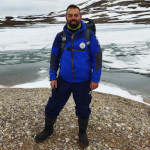 He is currently a fixed-term Technical Collaborator (VI level) (from July 2023) within the PNRR EMBRC project Unlocking the Potential for Health and Food from the seas - EMBRC-UP. Since 2021 he has also been a PhD student in Polar Sciences at the Ca' Foscari University of Venice. In 2014 he obtained a degree in Biology and Ecology of the Coastal Marine Environment at the University of Messina, with the thesis entitled Tolerance to heavy metals and polychlorinated biphenyls in Arctic bacteria (Continental Norway). During the preparation of his degree thesis he spent 4 months at the University of Valencia (Spain) to acquire new laboratory techniques. He has participated in several sampling activities in the Arctic, Antarctica and the Mediterranean for the collection and processing of samples for microbiological studies. In particular, the research interest is aimed at the study of microbial populations in aquatic environments (sea, freshwater and hyperhaline brine), sediments and permafrost. Among the techniques used: estimation of prokaryotic biomass by counting and morphometric and morphological analysis, through the application of microscopic techniques in epifluorescence and image analysis; analysis of the prokaryotic community using CARD-FISH and next generation sequencing; estimation of physiological profiles of prokaryotes at community level using BIOLOG Ecoplate; quantification of viable cells through the use of biomarkers (LIVE/DEAD and CTC); screening of bacteria for the ability to degrade polluting organic compounds. He is the author or co-author of approximately 25 articles in international journals.
He is currently a fixed-term Technical Collaborator (VI level) (from July 2023) within the PNRR EMBRC project Unlocking the Potential for Health and Food from the seas - EMBRC-UP. Since 2021 he has also been a PhD student in Polar Sciences at the Ca' Foscari University of Venice. In 2014 he obtained a degree in Biology and Ecology of the Coastal Marine Environment at the University of Messina, with the thesis entitled Tolerance to heavy metals and polychlorinated biphenyls in Arctic bacteria (Continental Norway). During the preparation of his degree thesis he spent 4 months at the University of Valencia (Spain) to acquire new laboratory techniques. He has participated in several sampling activities in the Arctic, Antarctica and the Mediterranean for the collection and processing of samples for microbiological studies. In particular, the research interest is aimed at the study of microbial populations in aquatic environments (sea, freshwater and hyperhaline brine), sediments and permafrost. Among the techniques used: estimation of prokaryotic biomass by counting and morphometric and morphological analysis, through the application of microscopic techniques in epifluorescence and image analysis; analysis of the prokaryotic community using CARD-FISH and next generation sequencing; estimation of physiological profiles of prokaryotes at community level using BIOLOG Ecoplate; quantification of viable cells through the use of biomarkers (LIVE/DEAD and CTC); screening of bacteria for the ability to degrade polluting organic compounds. He is the author or co-author of approximately 25 articles in international journals.
Papale Maria
 Born in Messina, she obtained her Ph.D. in Environmental Sciences at the University of Messina (2016) presenting the thesis PCB-oxidising bacteria from Arctic and Antarctic environments. She is a member of the eLTER H2020 Starting Communities project group and of the Association of Polar Early Career scientists APECS group.
Born in Messina, she obtained her Ph.D. in Environmental Sciences at the University of Messina (2016) presenting the thesis PCB-oxidising bacteria from Arctic and Antarctic environments. She is a member of the eLTER H2020 Starting Communities project group and of the Association of Polar Early Career scientists APECS group.
Currently, she is coordinating the PNRA18_00194 Microbial response to human Pollutants in polAr lakeS-MicroPolArS project and the INTERACT Mercury concentration and tolerant microorganisms in Arctic SNOW: new Bioremediation chALLenges – SNOW BALL project. She actively participates in national and international research projects on topics related to microbial ecology and biotechnology in polar environments. Particular interest is directed to the use of molecular tools for the study of biodiversity and the functionality of microbial communities, with attention to the ability to degrade polluting compounds. As part of projects focused on microbiology in polar environments, she has participated in sampling campaigns in the Arctic and Antarctica, as well as oceanographic cruises in the Mediterranean.
She specializes in: the treatment of microbiological samples of various origins; the use of molecular tools for bacterial biodiversity and DNA/RNA probe hybridization; analysis of microbial communities (metagenomics) by next-generation sequencing; differential expression and statistical validation of RNA-seq data; estimation of microbial biomass; screening of bacteria for the production of molecules of biotechnological interest and for the ability to degrade polluting compounds. She has had the opportunity to perfect her bioinformatics and laboratory skills also thanks to numerous stays in foreign institutes including Sequentia biotech (Barcelona, Spain), the University of Jyvaskyla (Finland), and the University of Valencia (Spain). She is the author or co-author of numerous articles in peer-reviewed journals, including Scientific Reports, Science of the Total Environment, Soil Biology and Biochemistry, PLOS One, Applied and Environmental Microbiology, Microbial Ecology, and more than 30 communications at national and international conferences.
![]() http://orcid.org/0000-0002-6013-4436 Research Gate
http://orcid.org/0000-0002-6013-4436 Research Gate
Cosenza Alessandro
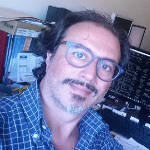 CTER IV livello – IT Manager
CTER IV livello – IT Manager
System administrator of the CNR-ISP Messina detached branch. In this context, it carries out the following activities:
- Access Port Manager (APM) - technical reference to the GARR;
- maintains the network infrastructure of the Messina institute;
- maintains network services and, in particular, the servers (e.g. file server, web server, firewall, DNS, NAT, etc…) for the delivery of transversal and local services;
- management of transmission networks (LAN and wireless);
- management of routing polices (router CISCO and firewall);
- hardware and software assistance and support to workstations in offices and laboratories;
- support for videoconferencing;
- use of statistical software for processing and interpretation of experimental results (in particular through the use of R, a specific development environment for statistical analysis of data).
He also manages the local staff institute data: attendance, absence, skills, meal vouchers, through ePAS, the system for detecting and managing attendance of CNR staff.
Maimone Giovanna
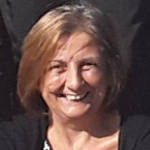 She is currently CTER - IV level at the Institute of Polar Sciences in Messina.
She is currently CTER - IV level at the Institute of Polar Sciences in Messina.
She has participated to numerous oceanographic cruises in the Mediterranean Sea with particular regard to the collection, treatment and analysis of samples. She actively participates at national and international research projects on polar issues.
Her research activities are mainly devoted to the study of the ecology of bacterial populations in aquatic samples (seawater and brines) and permafrost. In particular: to the study of the biomass of prokaryotes by counting and morphometric and morphological analyses, through the application of microscopic techniques in epifluoresence and image analysis; the estimation of physiological profiles at community level of prokaryotes through BIOLOG Ecoplate; the quantification of viable cells through the use of biomarkers (LIVE/DEAD and CTC). She also performs graphic and statistical processing of experimental data and collaborates in the drafting of scientific papers.
Scopus - Author ID: 7801432695
Montagna Paolo
 Director of Research at CNR-ISP.
Director of Research at CNR-ISP.
Laurea (M. Sc. equiv.) in Geology (1999), University of Padova. PhD (European Doctorate Label) in Earth Sciences (2005), University of Padova, in collaboration with the Australian National University.
His research mainly focuses on the development and application of geochemical proxies for paleoclimate reconstructions on a variety of timescale and aims to address some of the fundamental aspects of the biomineralization mechanisms in calcifying organisms (corals, molluscs, calcareous algae). This includes the analysis of minor and trace elements, as well as stable (11B/10B) and radiogenic (143Nd/144Nd, 87Sr/86Sr, 230Th/U) isotopes in biogenic carbonates.
He has acquired significant expertise in the geochemistry of biogenic carbonates, physical and chemical oceanography and deep-sea habitat mapping while working for extended periods at world leading institutions for geochemistry and paleoclimate related studies (Australian Institute of Marine Sciences, Australian National University, Lamont-Doherty Earth Observatory, Laboratoire des Sciences du Climat et de l'Environnement, Université Paris-Saclay and University of Western Australia). He has participated to 20 oceanographic cruises in the Mediterranean Sea, Atlantic, Indian Ocean, and the Ross Sea off Antarctica (some of them as chief or co-chief scientist), and several SCUBA diving expeditions in the Caribbean Sea, Red Sea, Indian and Pacific Ocean.
He has authored more than 90 peer-reviewed scientific papers, 4 book chapters, more than 120 abstracts and 20 invited talks, and he has served as a proposal reviewer for ERC Advanced Grant, NSF-USA, ANR-France, CNRS/INSU-France, NSERC-Canada, FONDECYT-Chile, DFG-Germany, ISF-Israel, Czech Science Foundation, EUROFLEET Plus, Swiss National Science Foundation Eccellenza Professional Fellowship, SCOR WG and Italian Programme for recruitment of young researcher as well as for 25 peer-reviewed scientific journals.
![]() http://orcid.org/0000-0001-5598-2214 Google Scholar
http://orcid.org/0000-0001-5598-2214 Google Scholar
Miserocchi Stefano
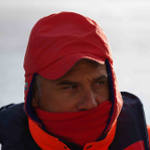 Degree in Geological Sciences in 1987 in Bologna. Researcher at the CNR Institute of Marine Sciences from 1994 to 2019, he has been involved in biogeochemical and sedimentological research in the marine and coastal environment.
Degree in Geological Sciences in 1987 in Bologna. Researcher at the CNR Institute of Marine Sciences from 1994 to 2019, he has been involved in biogeochemical and sedimentological research in the marine and coastal environment.
Sedimentology, biogeochemistry and dynamics of marine sediments and particles. Main focus on flux and mass balance calculations for carbon, as well as biogenic and terrigenous constituents to understand origins, transport pathways and fates of particles on continental margins. Study of organic matter in the sediment and of nutrient fluxes at the water-sediment interface. His research interests currently are: (a) vertical fluxes of particles and lateral transportation of materials from the continental shelf to deep basins in Arctic and Mediterranean Sea; (b) Non-destructive core logging/scanning methods including XRF Core Scanning.
Participation at EC and Arctic projects (Snow, Arca, Defrost). PI or WP leader of projects funded by ONR and national projects. Participation in more than 75 oceanographic cruises between 1990 and 2019 (on which 20 as Chief Scientist) for a total of 525 days of shipboard experience.
Author and co-author on over 158 publications (+ 120 abstracts) included data and technical reports, of which 62 publications on Scopus, 1513 citations, H index = 23.
Scopus - Author ID: 6602827994 Google Scholar
Mazzola Mauro
 He mainly deals with two research topics: the physical and optical characterization of atmospheric particulate matter, also known as aerosol, and the estimate of the energy balance at the surface. As for the first topic, he uses techniques such as solar and lunar photometry for the estimation of the optical thickness of the aerosols in the atmosphere, the in-situ measurement of the scattering and absorption coefficients and the size distribution, through online optical. This last type of measurement is also carried out on profiles obtained by means of a tethered balloon. As for the energy balance, he uses an integrated approach between measurements and calculation codes for the radiative part, while the heat and mass balances are estimated by direct eddy covariance measurements. These activities take place mainly at the CNR infrastructures in Ny-Ålesund (Svalbard) and at the Korean base Jang Bogo in Antarctica, a country in which a close collaboration has been active for years.
He mainly deals with two research topics: the physical and optical characterization of atmospheric particulate matter, also known as aerosol, and the estimate of the energy balance at the surface. As for the first topic, he uses techniques such as solar and lunar photometry for the estimation of the optical thickness of the aerosols in the atmosphere, the in-situ measurement of the scattering and absorption coefficients and the size distribution, through online optical. This last type of measurement is also carried out on profiles obtained by means of a tethered balloon. As for the energy balance, he uses an integrated approach between measurements and calculation codes for the radiative part, while the heat and mass balances are estimated by direct eddy covariance measurements. These activities take place mainly at the CNR infrastructures in Ny-Ålesund (Svalbard) and at the Korean base Jang Bogo in Antarctica, a country in which a close collaboration has been active for years.
He is author of about 100 publications including journal articles and contributions in scientific books.
Scopus - Author ID: 24367405100
![]() http://orcid.org/0000-0002-8394-2292
Google Scholar
http://orcid.org/0000-0002-8394-2292
Google Scholar
Lupi Angelo
 His main activities are focused in the study of the optical properties of the atmosphere, the interactions between ultraviolet radiation, visible and infrared with atmospheric constituents; his research interests have turned to the impact that aerosols, trace gases and clouds exert on the radiation balance of the Earth-atmosphere system, focusing in particular on the assessment of the direct radiative effects produced by the aerosol, on the assessment of the radiation balance in the polar areas and the role that gas trace, aerosols and clouds in these regions have particularly sensitive.
His main activities are focused in the study of the optical properties of the atmosphere, the interactions between ultraviolet radiation, visible and infrared with atmospheric constituents; his research interests have turned to the impact that aerosols, trace gases and clouds exert on the radiation balance of the Earth-atmosphere system, focusing in particular on the assessment of the direct radiative effects produced by the aerosol, on the assessment of the radiation balance in the polar areas and the role that gas trace, aerosols and clouds in these regions have particularly sensitive.
The scientific activity has been divided among the experimental research (mainly solar photometry, measurements of downwelling and upwelling radiative fluxes in the visible and near-and far-infrared, aerosol optical and physical properties), and modelling using radiative transport codes for the evaluation of the radiative fluxes in the atmosphere. Over the past years he has participated at multiple Antarctic polar campaigns, gaining experience in instrumentation and data analysis. He is co-author of more than 50 articles in international journals.
Scopus - Author ID: 7005284903 ![]() http://orcid.org/0000-0002-5009-9876
http://orcid.org/0000-0002-5009-9876
Langone Leonardo
 He is interested in determining rates of aquatic processes involving sediment particles, using radioactive tracers and time-series sediment traps. Particle dynamics is then applied to the study of the effects of climate change on the marine and polar environment, such as: a) biogeochemical cycles of organic C and biogenic silica in the Southern Ocean, Fram Strait and Mediterranean Sea; b) Late Quaternary paleoceanographic reconstructions using biogenic and radionuclide components; c) estimates of atmospheric CO2 growth rate in remote and polar ocean; c) particle transport by dense water cascading down to the deep marine realm; e) historical reconstruction of the sediment pollution of lacustrine and coastal environments in highly populated and remote polar areas.
He is interested in determining rates of aquatic processes involving sediment particles, using radioactive tracers and time-series sediment traps. Particle dynamics is then applied to the study of the effects of climate change on the marine and polar environment, such as: a) biogeochemical cycles of organic C and biogenic silica in the Southern Ocean, Fram Strait and Mediterranean Sea; b) Late Quaternary paleoceanographic reconstructions using biogenic and radionuclide components; c) estimates of atmospheric CO2 growth rate in remote and polar ocean; c) particle transport by dense water cascading down to the deep marine realm; e) historical reconstruction of the sediment pollution of lacustrine and coastal environments in highly populated and remote polar areas.
Participation at EC and national projects. PI of projects funded by industry and ONR. PI or WP leader in Antarctica and Arctic projects. CNR scientific contact in EU-ARICE and EU-INTERACT III. Experience >30 years of oceanographic campaigns with 90 participations (18 as Chief Scientist) in the Mediterranean, Atlantic, Southern Ocean and Arctic ocean. Scientific coordinator of marine activities during 2 Italian expeditions in Antarctica. He is the pro-tempore Director of the Institute of Polar Sciences of the Italian CNR (CNR-ISP).
He is author or co-author of ca. 100 scientific papers published on ISI journals with Impact Factor, ca. 60 scientific papers published on no-ISI journals, 7 chapters of book, 30 technical reports and cruise reports. Citation number amounts to about 2500, with a Hirsch factor (h-factor) of 27 (font Scopus).
Scopus - Author ID: 6603776561 Research Gate Google Scholar
La Mesa Mario
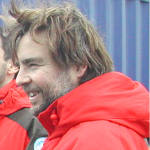 Laurea cum Laude in Biology (1990), at the II University of Rome. From 2001 to 2019, he was recruited as permanent position scientist at the Institute of Marine Sciences in Ancona.
Laurea cum Laude in Biology (1990), at the II University of Rome. From 2001 to 2019, he was recruited as permanent position scientist at the Institute of Marine Sciences in Ancona.
Currently, he works at the Institute of Polar Sciences of CNR in Bologna. His fields of interest include age determination through otolith analysis, reproductive biology and feeding habits of fishes from both Mediterranean and Antarctic waters. He participated to several research projects funded by EC, MIUR and PNRA.
He was involved for a long time with foreign scientists on Antarctic topics and participated to several international scientific cruises in the Southern Ocean (mainly Germany and USA). Currently, he is author/co-author of about 100 papers published on peer-reviewed journals (JCR).
Scopus - Author ID: 6701474004 ![]() http://orcid.org/0000-0002-3716-0054 Research Gate Google Scholar
http://orcid.org/0000-0002-3716-0054 Research Gate Google Scholar
Gilardoni Stefania
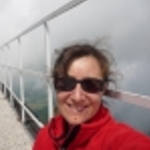 Education and previous professional experience. PhD in Chemistry from the University of Milano (2003). Degree in Chemistry from the University of Milano (2000)
Education and previous professional experience. PhD in Chemistry from the University of Milano (2003). Degree in Chemistry from the University of Milano (2000)
Senior researcher at the Institute of Polar Sciences of the National Research Council of Italy (ISP-CNR), August 2019 – present. Researcher at the Institute of Atmospheric Sciences and Climate of the National Research Council of Italy (ISAC-CNR), July 2011-July 2019. Visiting scientist at the Finnish Meteorological Institute, February 2011- March 2011. Researcher at the Joint Research Center of the European Commission, October 2007-September 2010. Researcher at the University of California San Diego, July 2005-September 2007. Researcher at the University of California Davis, February 2004-July 2005. PhD in Chemistry from the University of Milano (2003) Degree in Chemistry from the University of Milano (2000)
International activities. Editor for "Atmospheric Chemistry and Physics" (since 2013). Editor for "Aerosol and Air Quality Research" (since 2011). Guest Editor for "Atmosphere" special issue on Aerosol Mass Spectrometry (2017). Referee for scientific papers: Atmospheric Chemistry and Physics, Atmospheric Environment, Environmental Pollution, Environmental Science and Technology, Journal of Geophysical Research. Italian expert in the “Expert Group on Black Carbon and Methane” of the Arctic Council (since 2019). Working group leader for organic aerosol source apportionment of the COST Colossal project (2017-2021).
Area of scientific interest: Chemical and physical characterization of atmospheric aerosol with particular attention to the carbonaceous components, their chemical composition, microphysical properties, climate-relevant properties, and formation mechanisms. Cloud - aerosol interaction. Impact of air quality and climate change on fog formation.
Author of 58 publications in peer review journals and 5 chapters in books (h-index 21 – web of science)
Scopus - Author ID: 6602523027 ![]() http://orcid.org/0000-0002-7312-5571 WoS Researcher ID: P-1283-2014 Google Scholar
http://orcid.org/0000-0002-7312-5571 WoS Researcher ID: P-1283-2014 Google Scholar
Bando Dottorato di ricerca 37° ciclo in Scienze Polari - scadenza 21 aprile 2021
 Università Ca’ Foscari - Venezia
Università Ca’ Foscari - Venezia
Emanato il bando di concorso per l'ammissione ai Corso di Dottorato 37° ciclo in Scienze Polari. Informazioni relative alle modalità di partecipazione al concorso: www.unive.it
Versione in Inglese scaricabile. Il termine per la presentazione della domanda di ammissione è mercoledì 21 aprile 2021 ore 13.00 (ora italiana). Per informazioni sul bando inviare una mail a phd.application AT unive.it.
Antartide. Nuova call per la spedizione italiana presso la stazione Concordia 2020-2021
 Il PNRA (Programma nazionale di ricerche in Antartide) procede annualmente alla composizione e alla formazione del gruppo scientifico-tecnico-logistico per le attività da svolgere nel continente antartico. Data la necessità di avvalersi della collaborazione di alcune figure professionali per le attività di cosiddetto Winter Over, è stato pubblicato l'Avviso di interesse per la partecipazione alla XXXVI spedizione italiana in Antartide presso la stazione Concordia nel periodo Novembre 2020-Novembre 2021.
Il PNRA (Programma nazionale di ricerche in Antartide) procede annualmente alla composizione e alla formazione del gruppo scientifico-tecnico-logistico per le attività da svolgere nel continente antartico. Data la necessità di avvalersi della collaborazione di alcune figure professionali per le attività di cosiddetto Winter Over, è stato pubblicato l'Avviso di interesse per la partecipazione alla XXXVI spedizione italiana in Antartide presso la stazione Concordia nel periodo Novembre 2020-Novembre 2021.
--->>>>>>> NUOVA SCADENZA 12 MAGGIO 2020
Barbaro Elena
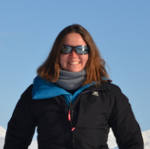 Ph.D.: Researcher at Institute of Polar Sciences-CNR (ISP), Venice, Italy;
Ph.D.: Researcher at Institute of Polar Sciences-CNR (ISP), Venice, Italy;
2013 to 2018 - Post-doctoral fellowship, Ca’ Foscari University, Venice, Italy and Institute for the Dynamics of Environmental Processes-CNR (IDPA), Venice, Italy;
2010-2012 PhD student in Chemical Sciences.
Research interests:
- Environmental chemistry; Her research is mainly focused on the investigation of chemical markers in several environmental compartments (ice, snow, aerosol, lake water, sediments) to define sources and transport processes mainly in the remote polar areas (Arctic and Antarctica).
- Development of very sensitive analytical methodsusing liquid chromatography coupled with tandem mass spectrometer (HPLC-MS/MS) and ion chromatography coupled with mass spectrometers (IC/MS) to investigate several chemical compounds at trace and ultra-trace concentration.
She has a deep experience in sample preparation in clean labs to determine organic compounds at trace and ultra-trace concentrations. She has participated in several scientific campaigns in the polar regions (Antarctica and the Svalbard Islands). Publications and bibliometrics H-index: 12 (Scopus); 41 scientific (SCOPUS) papers.
>50 poster and oral communications at scientific meetings; 2 invited oral presentations at international and national meetings National and International Appointments
2019-2015 Researcher under International Arctic Campaigns (Ny Alesund, Svalbard);
2012, 2014 Researcher under Antarctic campaigns (on-board Italica vessel and at Mario Zucchelli Station); Research projects
2018 - 2019 RCN - SSG- Spatial Distributions of Black Carbon and Mineral Dust in Air and Snow Surface Layers upon Svalbard Glaciers: participant;
2017-2019 PNRA - EvASIon - Mercer and Whillans lakes: Evolution of hydrologically Active Subglacial environments: participant;
2016-2017 RCN - SSG– Community Coordinated Snow Study in Svalbard: participant;
2012-2014 PNRA - CaBiLA: Geochemical characterization of Antarctic subglacial lakes: participant;
2012 - 2016 EU – Early Human Impact: participant
Scopus - Author ID: 46961088400 ![]() http://orcid.org/0000-0003-2639-7475 Google Scholar
http://orcid.org/0000-0003-2639-7475 Google Scholar
The Arctic Science Summit Week 2021, 19-25 March 2021 Lisboa - Portugal
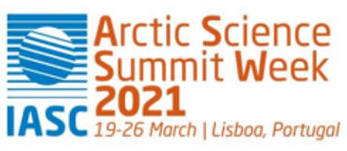 Framed by the overarching theme for the Science Conference The Arctic: Regional Changes, Global Impacts, Lisbon invites International experts on the Arctic and Indigenous Peoples to discuss the “New Arctic” and also its impacts and interactions to and with the lower latitudes.
Framed by the overarching theme for the Science Conference The Arctic: Regional Changes, Global Impacts, Lisbon invites International experts on the Arctic and Indigenous Peoples to discuss the “New Arctic” and also its impacts and interactions to and with the lower latitudes.
ASSW2021 Site
Arctic Science Summit Week 2020 Akureyri, Iceland | 27 March - 2 April 2020
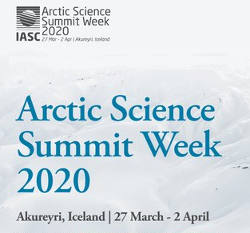 Convened by the International Arctic Science Committee (IASC)
Convened by the International Arctic Science Committee (IASC)
Hosted by the Icelandic Centre for Research and the University of Akureyri
ASSW2020 Site
Beyond EPICA Oldest Ice Core

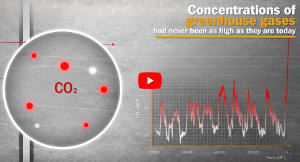 Com'era il clima più di 800.000 anni fa? Grazie al progetto OldestIce i ricercatori stanno ricostruendo la storia del clima del nostro pianeta con l’analisi del ghiaccio in Antartide. Il progetto è finanziato dall’Unione Europea. Intervista a Carlo Barbante, coordinatore del progetto. Il 1° giugno 2019 ha preso ufficialmente avvio Beyond EPICA Oldest Ice Core, finanziato dal programma di ricerca europeo Horizon 2020. Comunicato stampa CNR
Com'era il clima più di 800.000 anni fa? Grazie al progetto OldestIce i ricercatori stanno ricostruendo la storia del clima del nostro pianeta con l’analisi del ghiaccio in Antartide. Il progetto è finanziato dall’Unione Europea. Intervista a Carlo Barbante, coordinatore del progetto. Il 1° giugno 2019 ha preso ufficialmente avvio Beyond EPICA Oldest Ice Core, finanziato dal programma di ricerca europeo Horizon 2020. Comunicato stampa CNR
AGGIORNAMENTO (Settembre 2020): Annullata la campagna Beyond EPICA 2020/21
A causa delle restrizioni dovute al Covid-19, la campagna 2020/21 di Beyond EPICA è stata cancellata. La nostra priorità è mantenere l'Antartide libera dal SARS-Cov-2 virus e rendere la realizzazione del progetto la più sicura possibile. Tutte le attività in campo in Antartide saranno ridotte di un terzo e per questo motivo sarà data priorità alle attività di rifornimento della stazione Concordia e lo scambio del team per la campagna invernale. Il team Beyond EPICA tornerà al campo di Little Dome C nel 2021.
The 25th International Symposium on Polar Sciences KOPRI - May 12-13, 2020
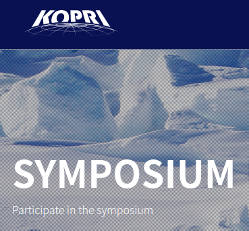 The 26th International Symposium on Polar Sciences
The 26th International Symposium on Polar Sciences
Finding solutions to global issues: Polar science and technology
May 12-13, 2020 - Korea Polar Research Institute - Incheon, Republic of Korea
The 26th International Symposium on Polar Sciences organized by Korea Polar Research Institute (KOPRI) will be held on May 12-13, 2020 in Incheon, Republic of Korea. This symposium aims to bring polar scientists together to discuss their research findings and to promote international collaborative research.
KOPRI Site
Rompighiaccio italiana Laura Bassi raggiunge il punto più meridionale della Terra (latitudine 78° 41.1006S)
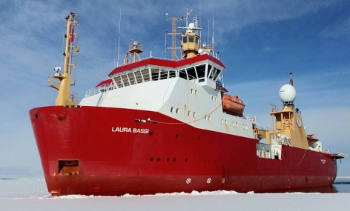 7 Febbraio 2020
7 Febbraio 2020
Il record è stato battuto nel corso di un campionamento nel Mare di Ross in Antartide, effettuato per la campagna oceanografica della 35a spedizione del Programma Nazionale di Ricerche in Antartide (PNRA), gestito da ENEA per la pianificazione e l’organizzazione logistica e dal Cnr per la programmazione e il coordinamento scientifico.
Comunicato stampa CNR
XXXV Spedizione in Antartide
Rompighiaccio Laura Bassi - Sito OGS
Physics and Chemistry of the Arctic Atmosphere
Edito da Springer un nuovo libro sull'atmosfera Artica, curato da Cladio Tomasi con Alexander Kokhanovsky, con diversi contributi dei ricercatori ISP (ISAC al momento della preparazione del volume).
Il libro presenta le conoscenze attuali di chimica e fisica dell'atmosfera artica. Particolare attenzione è rivolta agli studi sul fenomeno della foschia artica, alle nuvole troposferiche artiche, sulla nebbia artica, sulle nuvole stratosferiche e mesosferiche polari, sulla dinamica atmosferica, sulla termodinamica e sul trasferimento radiativo in relazione all'ambiente polare. I meccanismi di retroazione atmosfera-criosfera e le tecniche di telerilevamento atmosferico vengono presentati in dettaglio. Vengono anche affrontati i problemi dei cambiamenti climatici nell'Artico.
L'ISP nella spedizione oceanografica sulla piattaforma continentale dell’Australia sudoccidentale
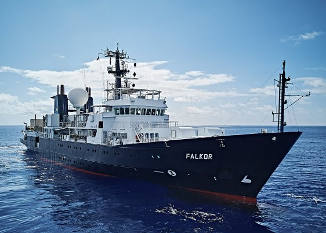 31 Gennaio 2020
31 Gennaio 2020
Ricercatori del CNR-ISMAR e CNR-ISP partecipano da gennaio 2020 ad una missione oceanografica della nave da ricerca Falkor appartenente allo Schmidt Ocean Institute. Il team internazionale comprende Paolo Montagna (CNR-ISP), che agirà come Co-Capo missione insieme a Julie Trotter dell’University of Western Australia, Marco Taviani, Federica Foglini e Alessandro Remia del CNR-ISMAR.
La campagna oceanografica FK200126 condurrà la prima esplorazione delle acque profonde nella zona sud-occidentale dell’Australia, lungo il Bremer Canyon e il Leeuwin Canyon.
Comunicato stampa CNR
Segui la crociera on line
Artico - Primo paleorecord di ghiaccio marino nel Nord Atlantico
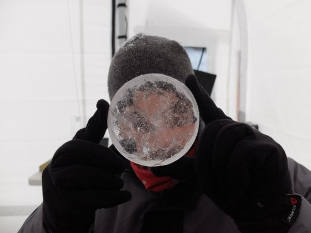 21 Gennaio 2020
21 Gennaio 2020
Studio dell’Istituto di scienze polari del Consiglio nazionale delle ricerche (CNR-ISP) pubblicato su Climate of the Past ha prodotto il primo paleorecord di ghiaccio marino nel Nord Atlantico che ha consentito di scoprirne l’evoluzione durante le variazioni climatiche degli ultimi 120mila anni.
A 120 000-year record of sea ice in the North Atlantic? Clim. Past, 15, 2031–2051, 2019
BANDO PNRA 2019
 MIUR - 17 gennaio 2020
MIUR - 17 gennaio 2020
Decreto Direttoriale n. 20 del 17-1-2020
PNRA 2019 Disciplina delle procedure per la presentazione di proposte di progetti di ricerca rivolte ad approfondire le conoscenze in Antartide.
Scarica e visiona il BANDO PNRA 2019
Scadenza: ore 12 del 27 febbraio 2020
SESS Report 2019
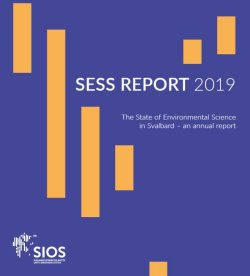 14 Gennaio 2020
14 Gennaio 2020
Il rapporto dello stato della scienza ambientale alle Svalbard (SESS) è stato rilasciato durante la settimana polare notte (SIOS Polar Night Week) a Longyearbyen, gennaio 2020. È il secondo numero di una serie annuale di relazioni pubblicate da SIOS. La relazione di quest'anno comprende le recensioni dei dati e delle attività esistenti, sintesi dei dati eaggiornamenti dei capitoli dell'anno scorso. Si tratta di una descrizione unica delle attività e della collaborazione in corso, nonché raccomandazioni per il futuro nella ricerca delle Svalbard.
Scoping Workshop: Toward Implementing an Antarctic RCC-Network - Bologna, Italy, 7-9 October 2019
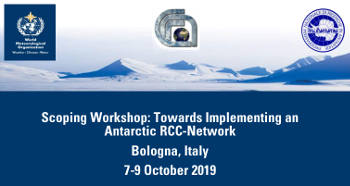 Scoping Workshop: Toward Implementing an Antarctic RCC-Network
Scoping Workshop: Toward Implementing an Antarctic RCC-Network
Bologna, Italy, 7-9 October 2019
The World Meteorological Organization (WMO) is fostering the establishment of Regional Climate Centres (RCCs) for the Polar Regions.
Antartide - Aggiornamenti dal progetto europeo Beyond EPICA - Oldest Ice Core
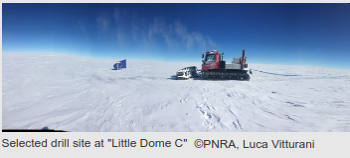 23 Dicembre 2019
23 Dicembre 2019
Sondaggio geofisico ad alta risoluzione conferma il sito per il carotaggio profondo del progetto europeo Beyond EPICA - Oldest Ice Core: 1.5 Myr of greenhouse gas - climate feedback. Esperti di 12 istituzioni provenienti da 10 paesi europei, coordinati da Carlo Barbante dell’Università Ca’ Foscari Venezia e dell’Istituto di Scienze Polari del Consiglio nazionale delle ricerche (CNR-ISP), hanno confermato il sito per il carotaggio in Antartide Orientale.
Comunicato stampa CNR
Beyond EPICA - Oldest Ice Core
Ricercatrice CNR nominata chair di una flagship della Ny-Ålesund Science Managers Committee (NySMAC)
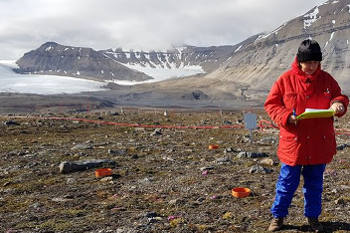 14 Novembre 2019
14 Novembre 2019
Nel corso del meeting della Terrestrial Ecology Flagship tenutosi ad Oslo il 5 novembre 2019 nell’ambito della Svalbard Science Conference, Angela Augusti ricercatrice dell'Istituto di ricerca sugli ecosistemi terrestri (CNR-IRET) è stata nominata coordinatrice della suddetta flagship.
Comunicato stampa CNR
Mostra Artico. Viaggio interattivo al Polo Nord, 15 Gennaio - 12 Febbraio 2020 - Sede CNR - ROMA
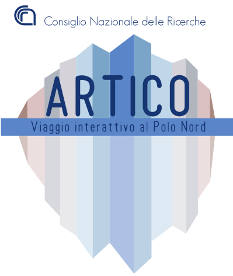 La mostra attraverso installazioni fisiche e multimediali, esperimenti interattivi, apparecchiature scientifiche, ricostruzioni in scala, documenti, oggetti e immagini suggestive guida il pubblico alla scoperta dell’Artico, delle sue peculiarità e dei fenomeni osservati.
La mostra attraverso installazioni fisiche e multimediali, esperimenti interattivi, apparecchiature scientifiche, ricostruzioni in scala, documenti, oggetti e immagini suggestive guida il pubblico alla scoperta dell’Artico, delle sue peculiarità e dei fenomeni osservati.
Il percorso della mostra prosegue mettendo a fuoco le principali attività di ricerca che l’Italia conduce in Artico e in particolare a Ny-Ålesund, nelle Isole Svalbard, dove il Cnr gestisce la stazione di ricerca 'Dirigibile Italia'. Infine si illustra la struttura organizzativa degli organismi internazionali, di cui anche l’Italia fa parte, che gestisce la programmazione scientifica e politica in Artico. La mostra, che si avvale del contributo di vari Istituti Cnr, è un’ottima occasione per capire le attività dei ricercatori italiani che operano in Artico.
EAIIST (East Antarctic Int'l Ice Sheet Traverse)
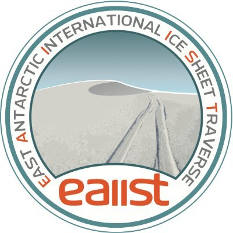 3 Dicembre 2019
3 Dicembre 2019
Una 'traversa' sul plateau in Antartide per stimare l'aumento del livelo dei mari
Dal 5 dicembre 2019 al 25 gennaio 2020, una squadra composta da scienziati francesi del Cnrs, dell’Università Grenoble Alpes e da scienziati italiani del Cnr e dell’Ingv percorrerà 1318 km tra andata e ritorno in mezzo al plateau dell’Antartide, su una traversa organizzata dall’Istituto Polare Francese (Ipev) con la collaborazione del Programma nazionale di ricerche in Antartide (Pnra).
Tra i ricercatori italiani sarà presente in campo Andrea Spolaor (CNR-ISP) .
Comunicato stampa CNR
EAIIST
Antartide: al via la 35a spedizione italiana (2019-2020)
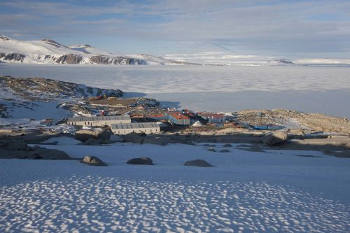 23 Ottobre 2019
23 Ottobre 2019
Gestita dall’ENEA per la pianificazione e l’organizzazione logistica e dal CNR per la programmazione e il coordinamento scientifico, la missione ha inizialmente riattivato i servizi e preparato la pista di 3 km sul pack marino per l’atterraggio di aerei intercontinentali.
Impiegata per la prima volta l’unica nave italiana in grado di operare nelle aree polari, la Laura Bassi, acquisita dall’Ogs di Trieste, che effettuerà una campagna oceanografica da Lyttelton a Baia Terra Nova.
Comunicato stampa CNR
BANDO PRA 2019 - Scadenza 6 Dicembre 2019
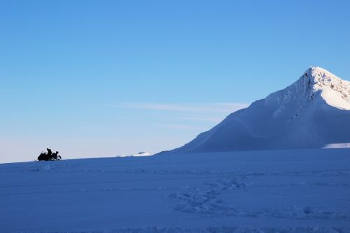 Programma di Ricerche in Artico 2019-2020:
Programma di Ricerche in Artico 2019-2020:
al via il bando per la presentazione di proposte
Disciplina delle procedure per la presentazione di proposte di progetti di ricerche specifiche a rivolte ad approfondire le conoscenze in Artico.
Scadenza per la presentazione delle domande: 6 dicembre 2019 h 12:00
 Ministero dell'Universita e Ricerca
Ministero dell'Universita e Ricerca
Programma Ricerche Artico
Programma Nazionale di Ricerca in Antartide
 Ministero degli Affari Esteri e della Cooperazione Internazionale
Ministero degli Affari Esteri e della Cooperazione Internazionale
L'Italia e l’Artico
L’Italia e l’Antartide
CNR-ISP
National Research Council
Institute of Polar Sciences
c/o Scientific Campus - Ca' Foscari University Venice - Via Torino, 155 - 30172 VENEZIA MESTRE (VE)
Phone: +39 041 2348547 - E-mail: protocollo.isp AT pec.cnr.it
Fax: +39 041 2348 549 - Codice Fiscale: 80054330586 - P.I.:02118311006
Unless otherwise indicated, the content of this site is licensed : Attribution Non Commercial Share Alike 4.0 International (CC BY-NC-SA 4.0)
Privacy policy e Cookie policy - Transparent administration (CNR)
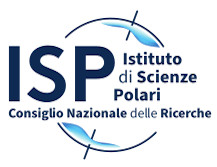







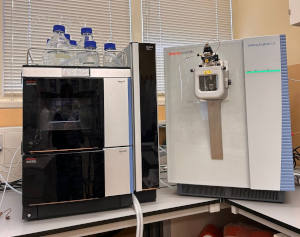
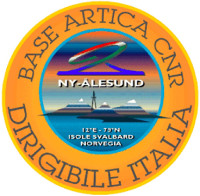 The Italian presence in the Arctic became permanent in the mid-nineties, thanks to the opening of the CNR station in the Svalbard Islands. In recent years, the interests of the Italian scientific community have been extended to other remote areas such as Greenland, areas of the Arctic Ocean, the Tibetan plateau and the Himalayas. In addition to the CNR, OGS, ENEA, INGV, INAF, ASI and some universities carry out research activities in these areas. In addition, Italy has strong economic interests in the Arctic with numerous industries that are active in this area, including ENI, Finmeccanica, Telespazio, E-geos, and Fincantieri. Since 1997 the has CNR carried out research in Ny-Ålesund in cooperation with national and international universities and other scientific institutions. The topics include climate, manmade pollution, instability of the ozone layer, the physical properties of aerosols and clouds in their role in radiation balances, ecology, genetics, physiology, biochemistry and the molecular and cellular biology of polar organisms, the optical properties of glacial surfaces, geochemistry, environment and permafrost, oceanography aimed at studying the transfer of energy and matter in relation to glacial coverage and, finally, historical and geographical studies that evaluate the Italian contribution to polar exploration and research. Recently there has been an intensification in the study of legal issues of specific to the Arctic with advice given to the Ministry of Foreign Affairs within the framework of the Arctic round table.
The Italian presence in the Arctic became permanent in the mid-nineties, thanks to the opening of the CNR station in the Svalbard Islands. In recent years, the interests of the Italian scientific community have been extended to other remote areas such as Greenland, areas of the Arctic Ocean, the Tibetan plateau and the Himalayas. In addition to the CNR, OGS, ENEA, INGV, INAF, ASI and some universities carry out research activities in these areas. In addition, Italy has strong economic interests in the Arctic with numerous industries that are active in this area, including ENI, Finmeccanica, Telespazio, E-geos, and Fincantieri. Since 1997 the has CNR carried out research in Ny-Ålesund in cooperation with national and international universities and other scientific institutions. The topics include climate, manmade pollution, instability of the ozone layer, the physical properties of aerosols and clouds in their role in radiation balances, ecology, genetics, physiology, biochemistry and the molecular and cellular biology of polar organisms, the optical properties of glacial surfaces, geochemistry, environment and permafrost, oceanography aimed at studying the transfer of energy and matter in relation to glacial coverage and, finally, historical and geographical studies that evaluate the Italian contribution to polar exploration and research. Recently there has been an intensification in the study of legal issues of specific to the Arctic with advice given to the Ministry of Foreign Affairs within the framework of the Arctic round table. 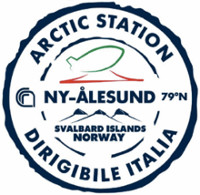 Contrary to the National Antarctic Research Programme, research in the Arctic has not received structured funding until very recently. However, within the CNR, the Department of Earth Sciences and Technologies for the Environment (
Contrary to the National Antarctic Research Programme, research in the Arctic has not received structured funding until very recently. However, within the CNR, the Department of Earth Sciences and Technologies for the Environment (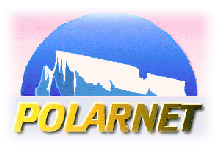 On December 6th, 2006, the CNR, with the
On December 6th, 2006, the CNR, with the 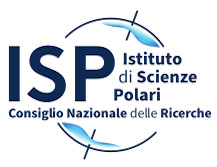 Italian researchers involved in research in polar areas and other remote areas of the planet are involved in highly interdisciplinary research in life sciences, Earth and climate sciences, marine sciences, atmospheric and space sciences, in addition to technological innovation. But national research in polar areas has often been very fragmented and scarcely visible in an international context, because, although carried out within highly qualified research groups, they have so far only been individually recognizable and not associated with a national structure.
Italian researchers involved in research in polar areas and other remote areas of the planet are involved in highly interdisciplinary research in life sciences, Earth and climate sciences, marine sciences, atmospheric and space sciences, in addition to technological innovation. But national research in polar areas has often been very fragmented and scarcely visible in an international context, because, although carried out within highly qualified research groups, they have so far only been individually recognizable and not associated with a national structure. 